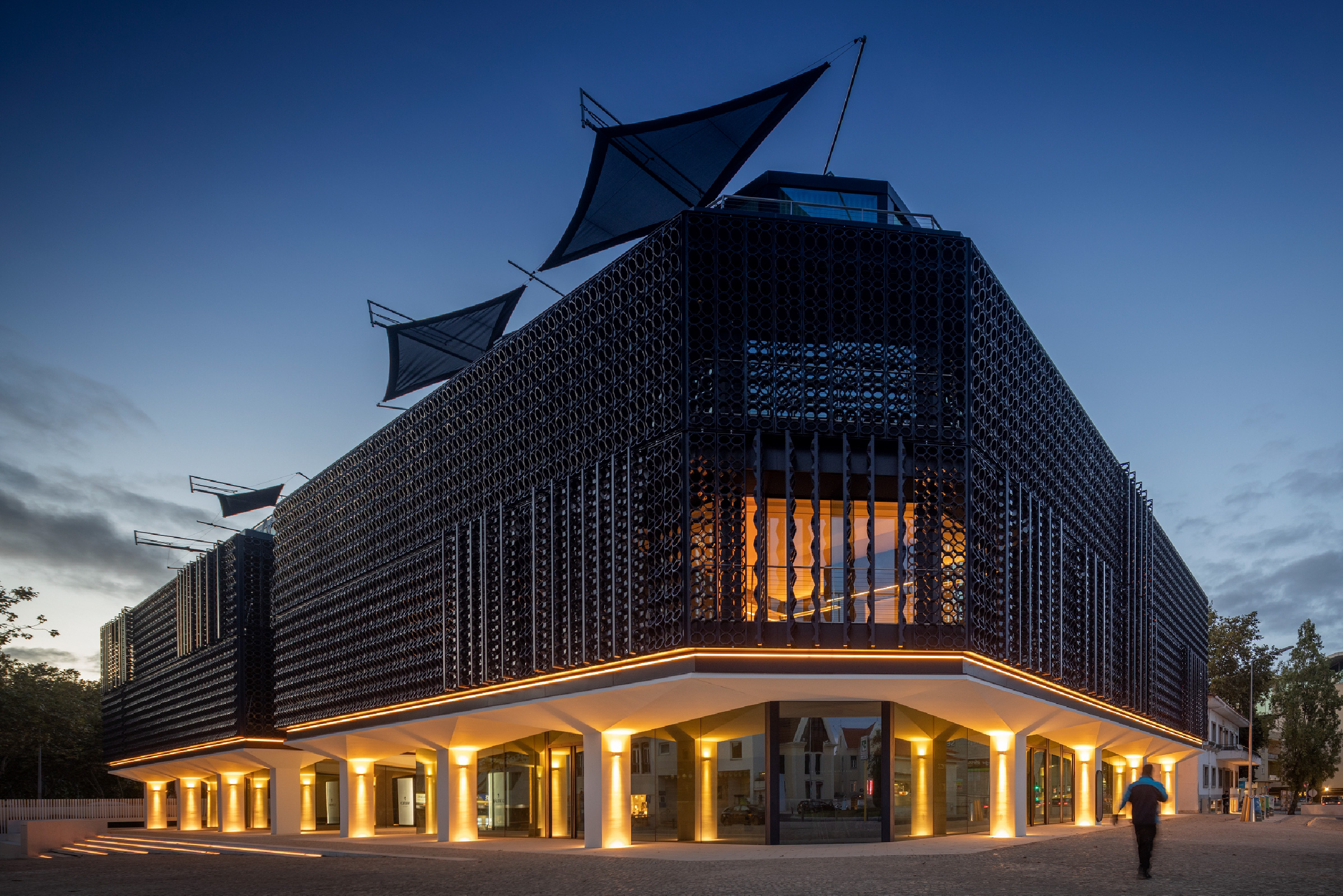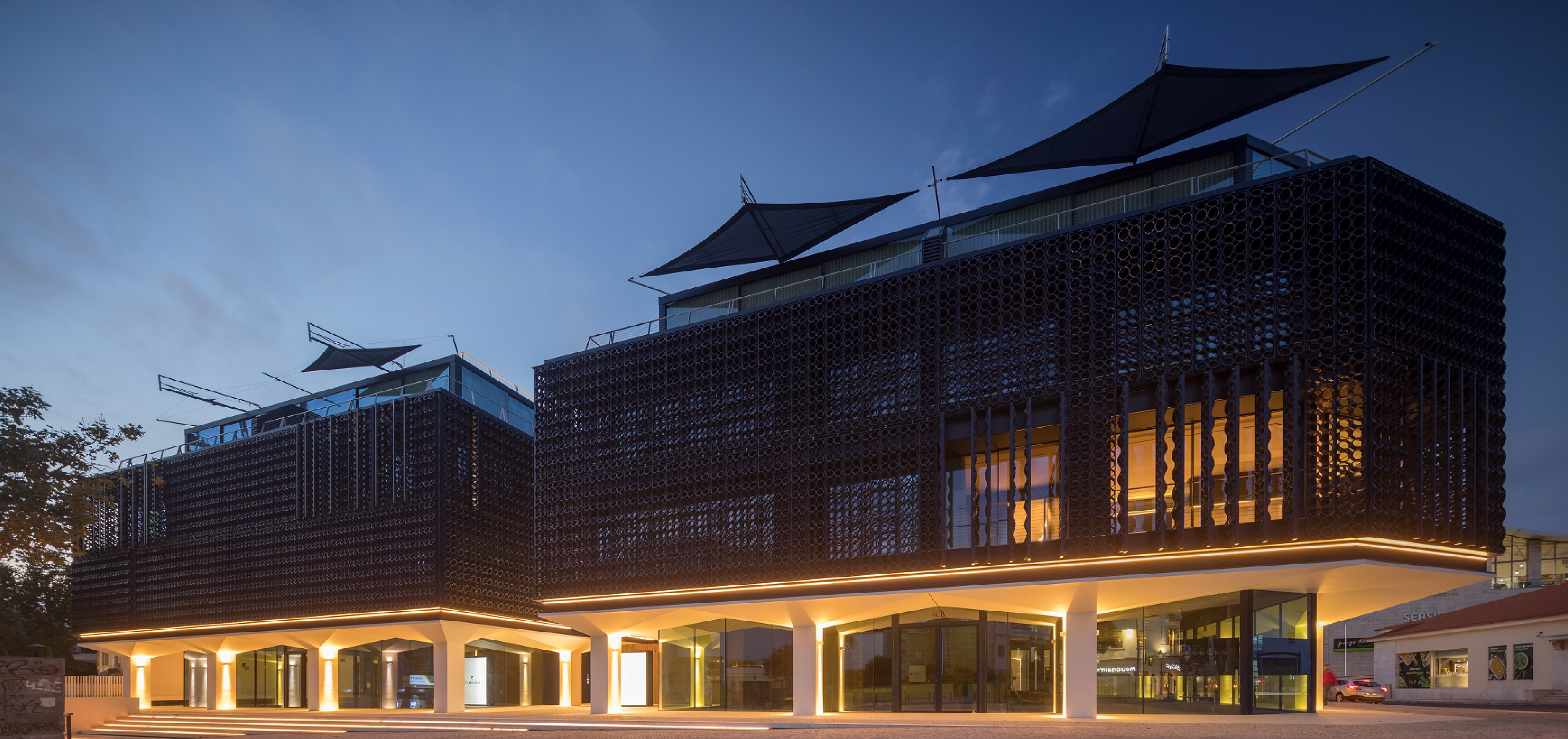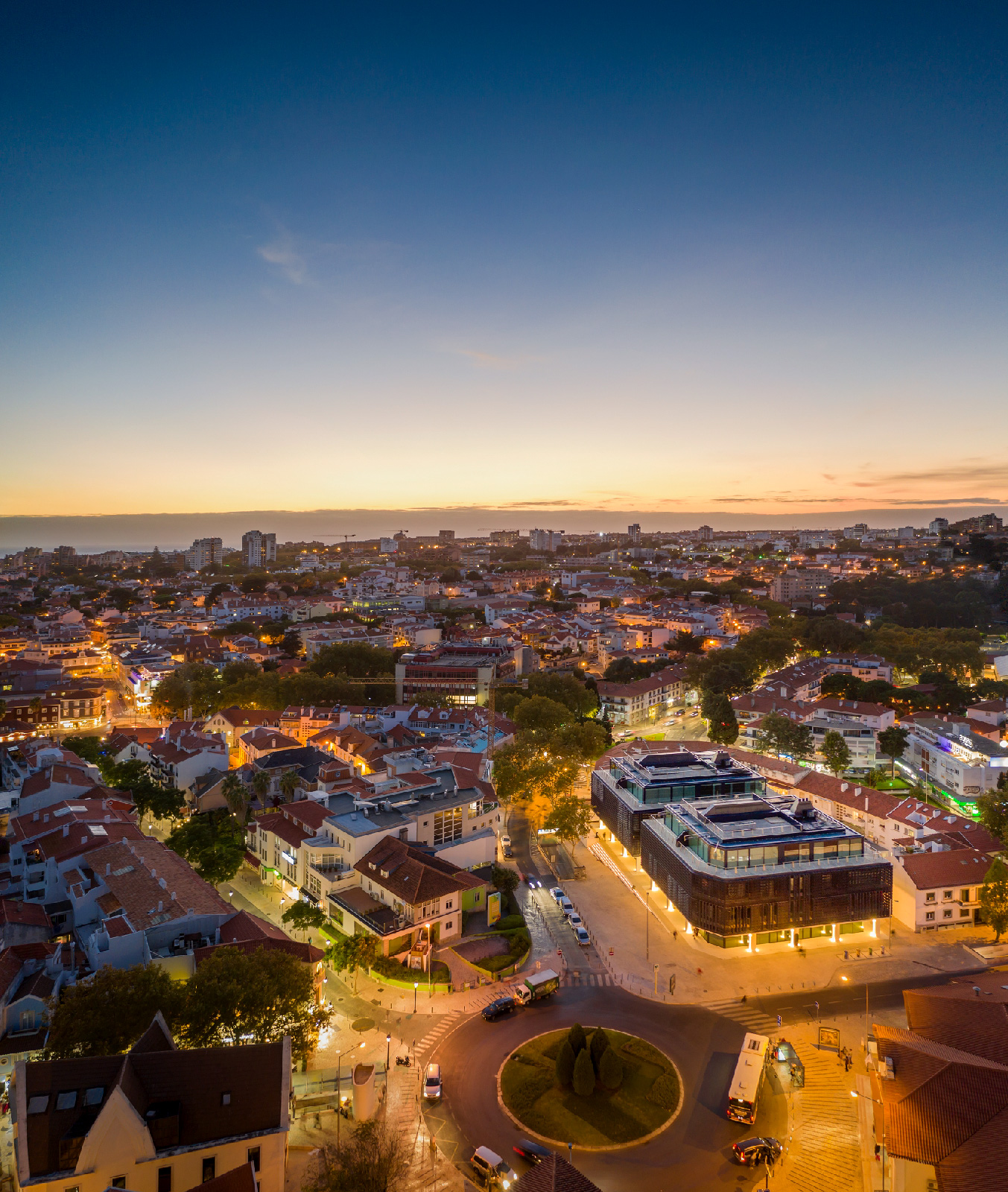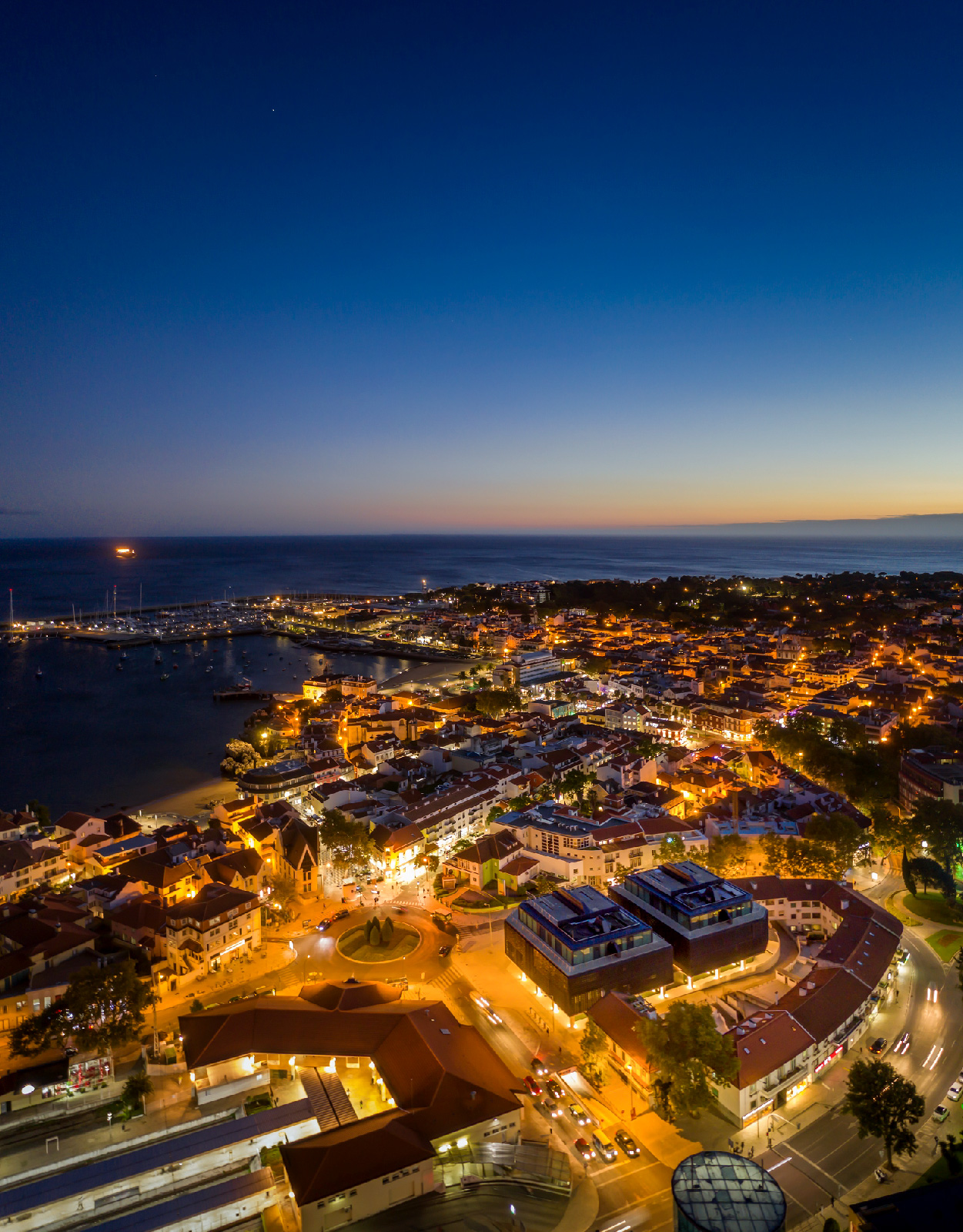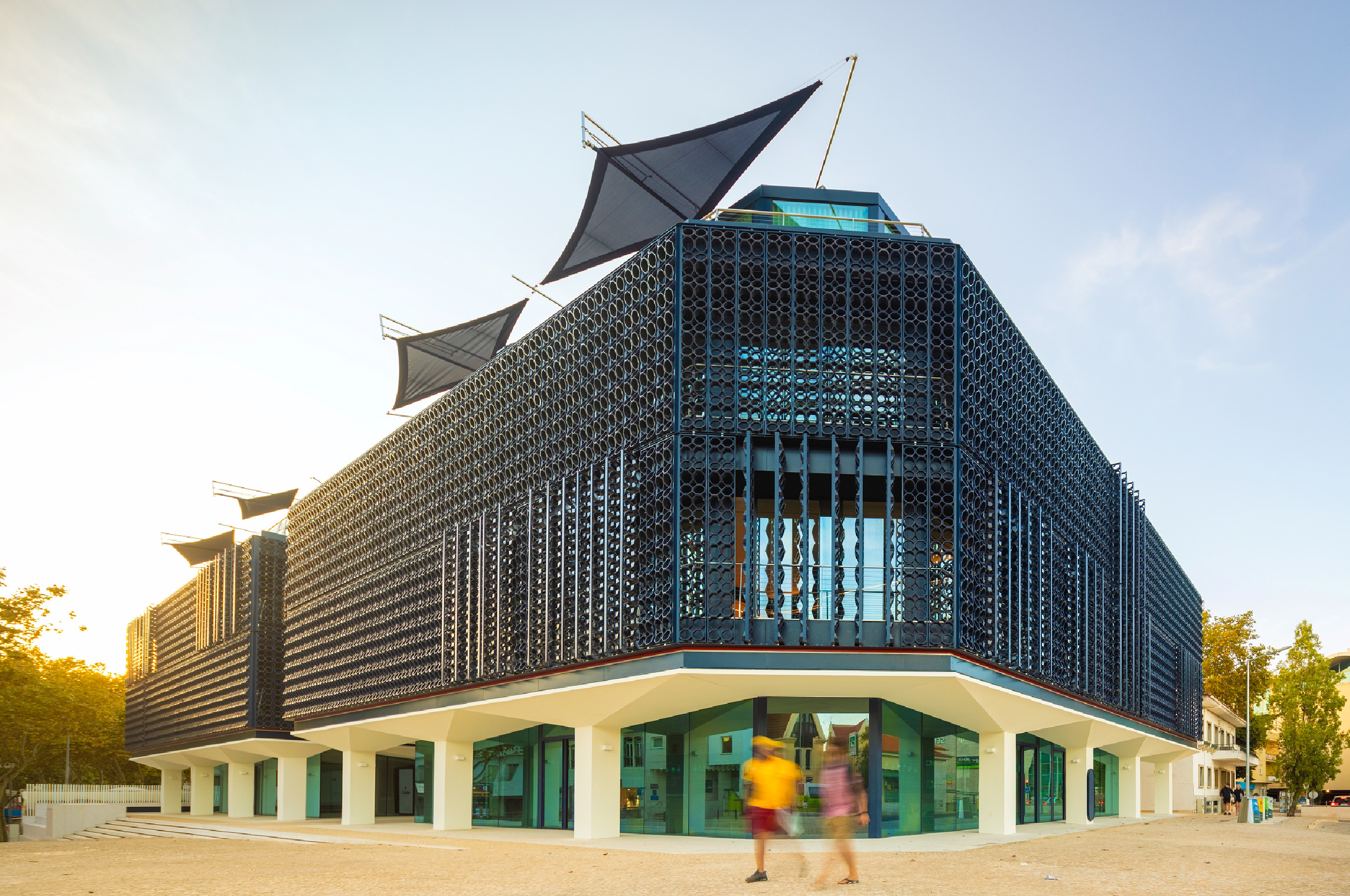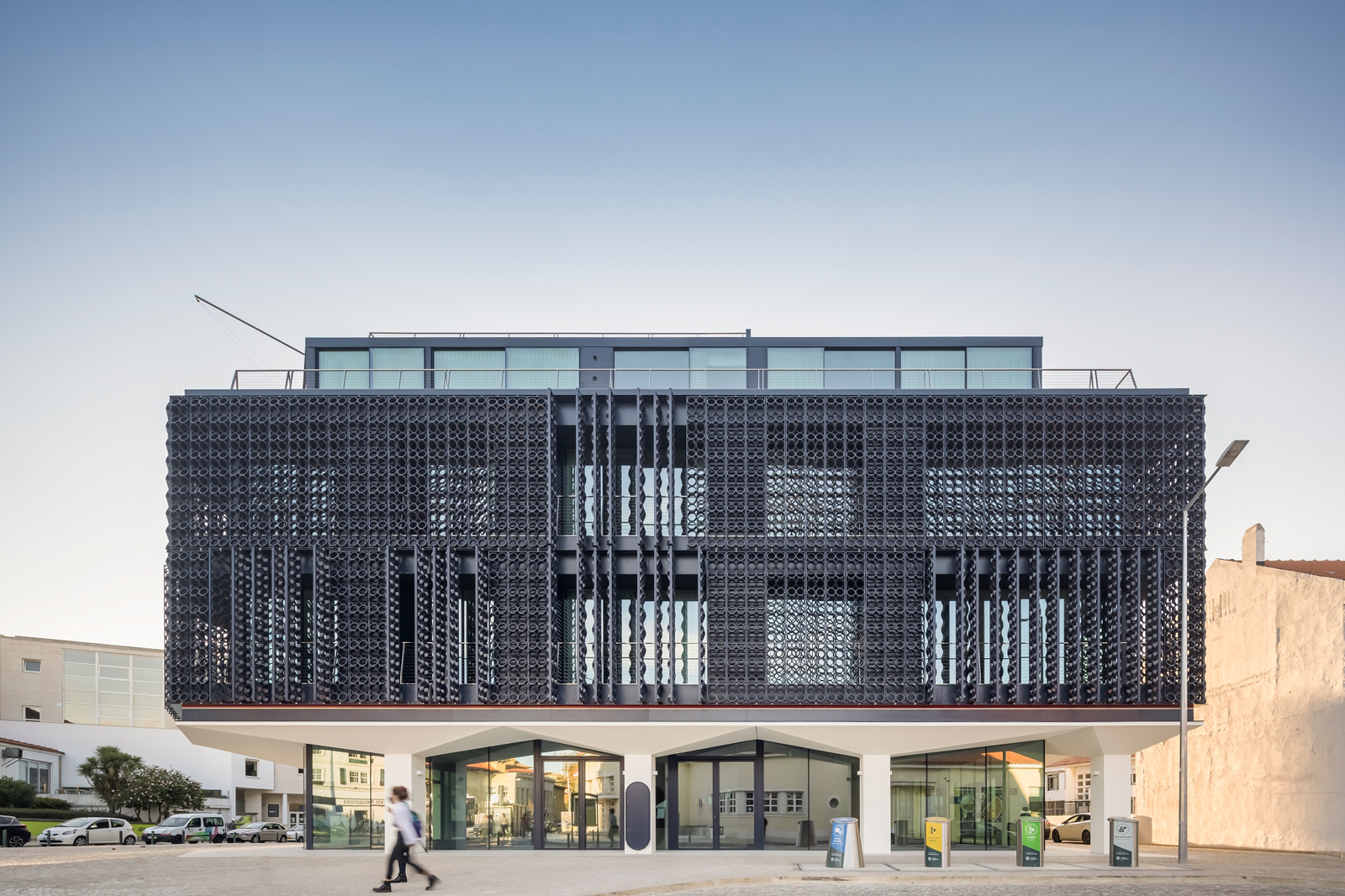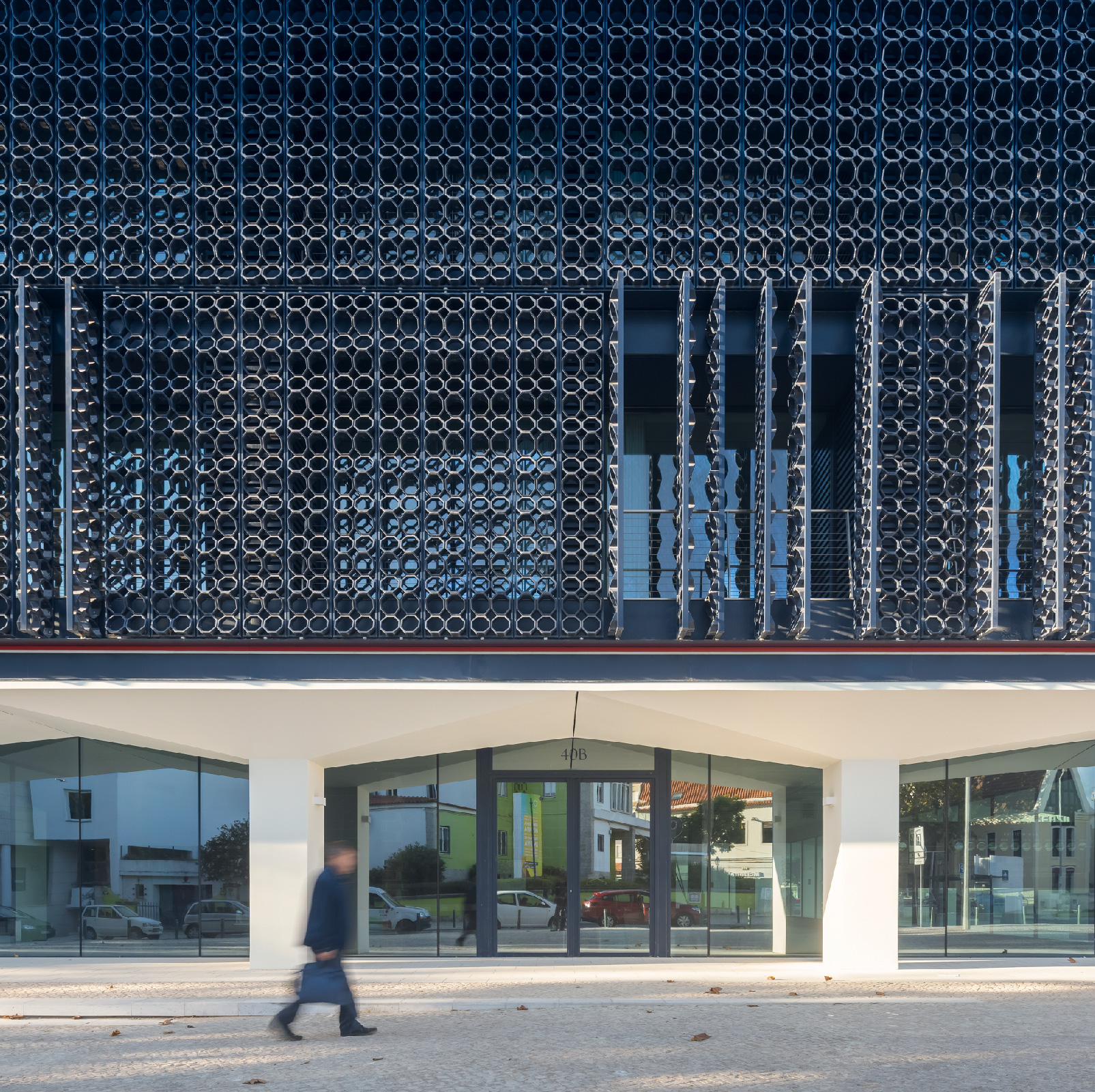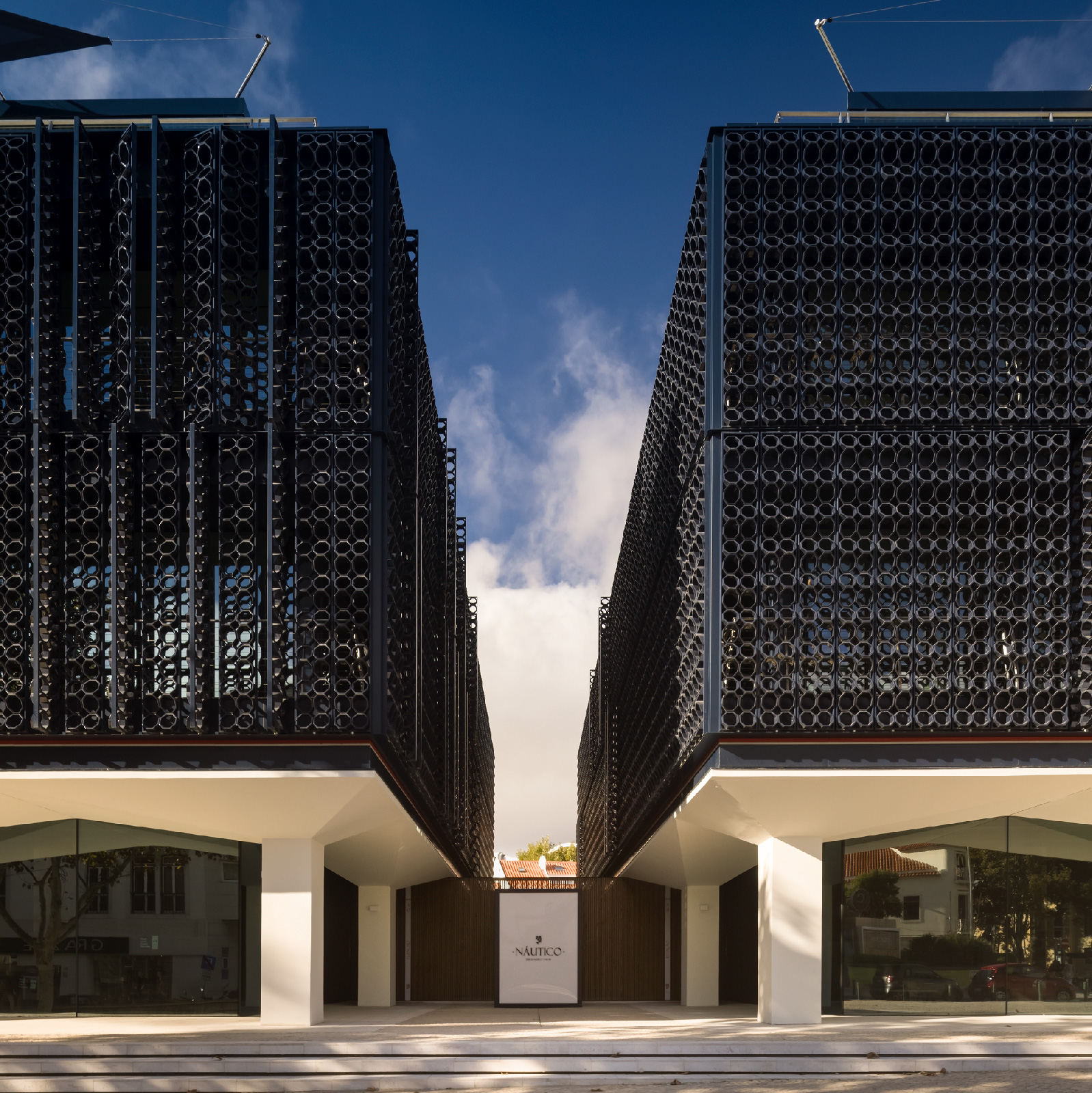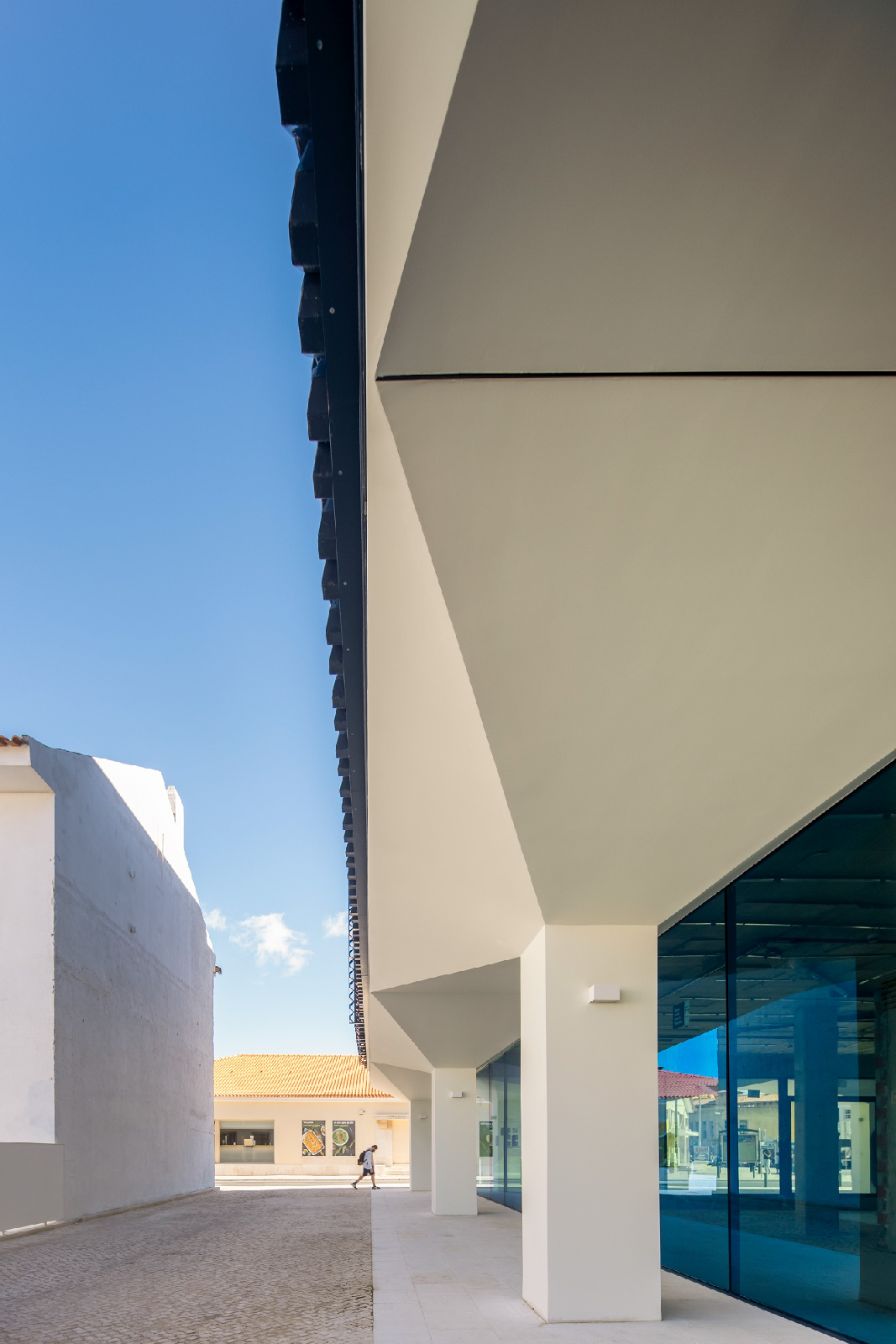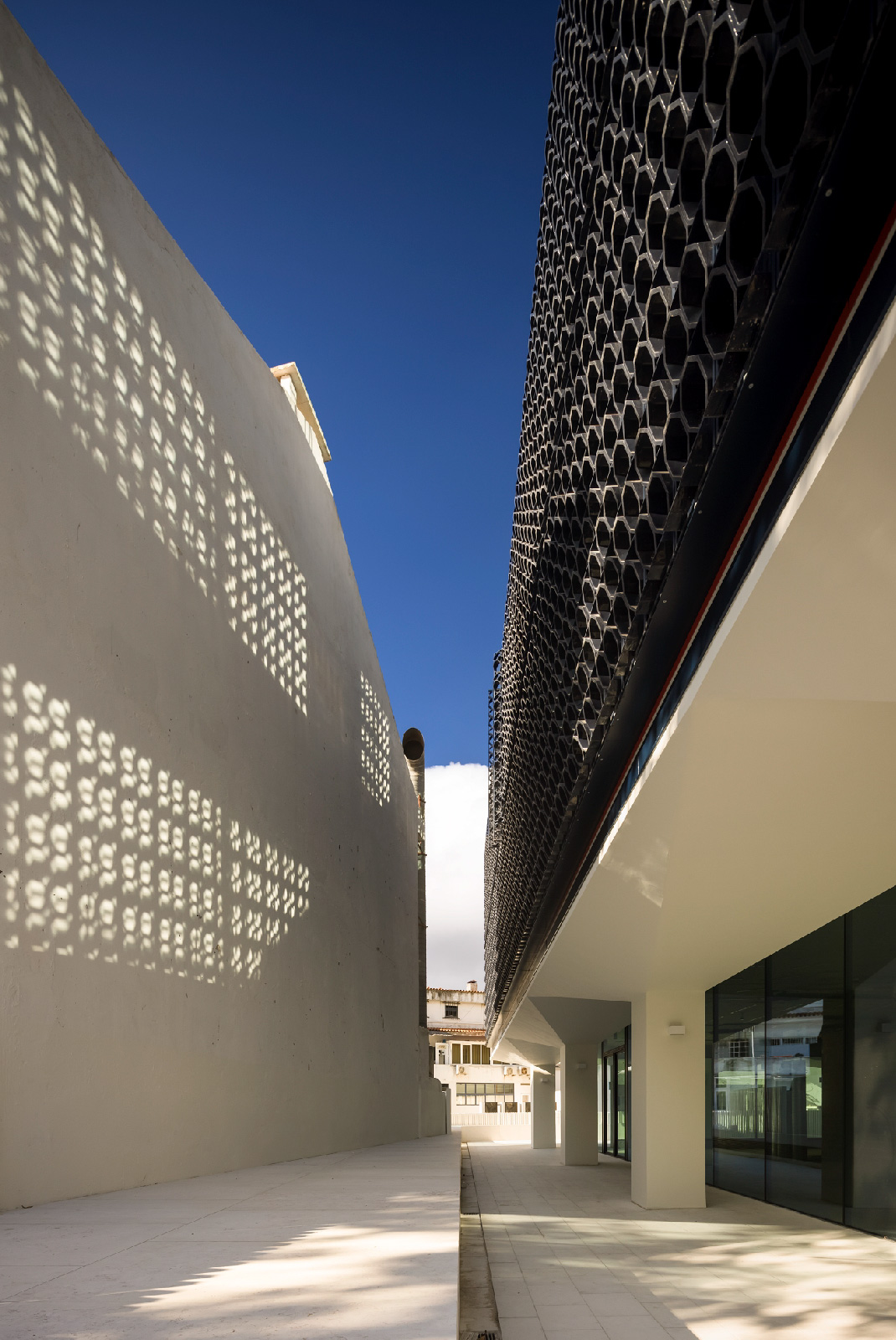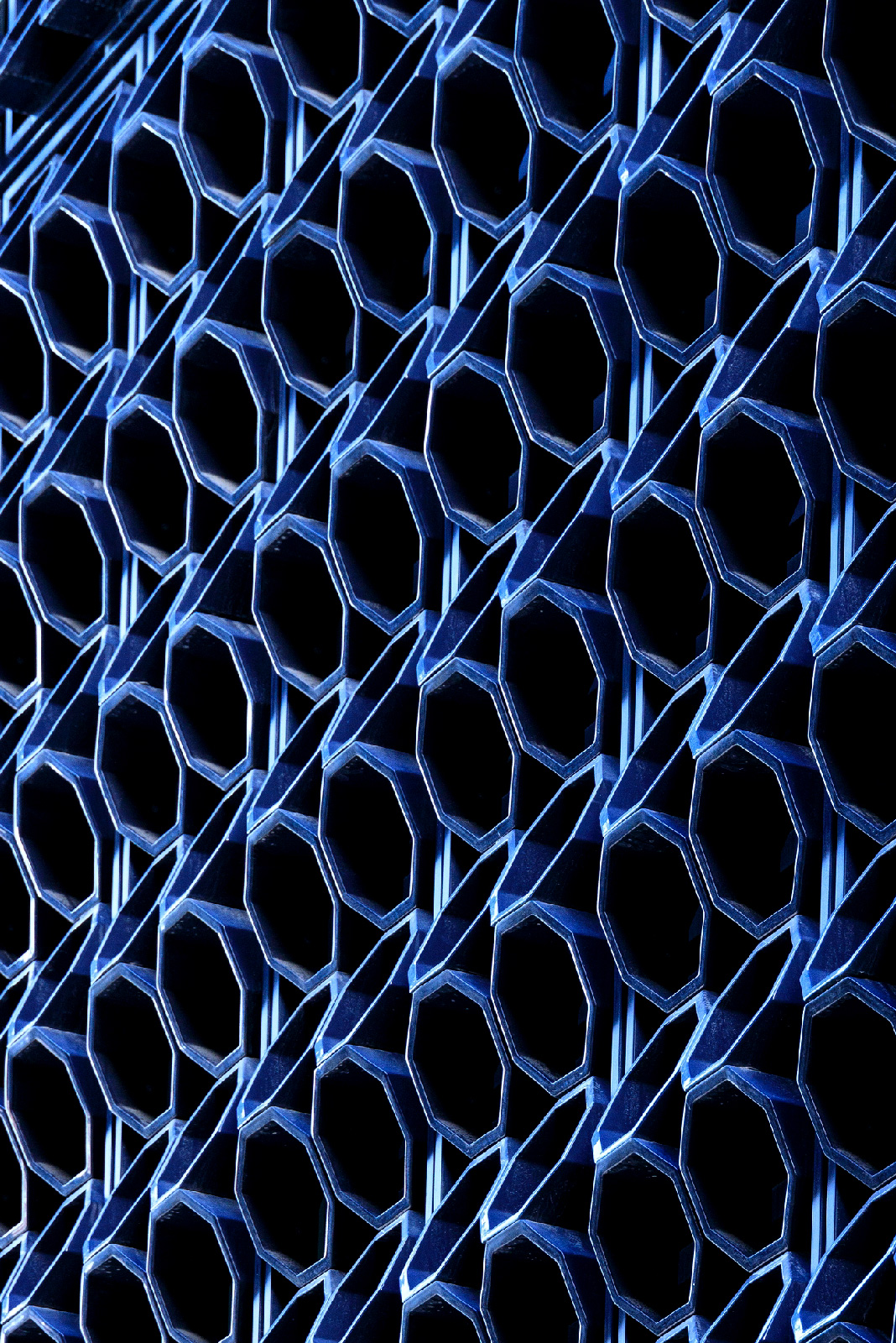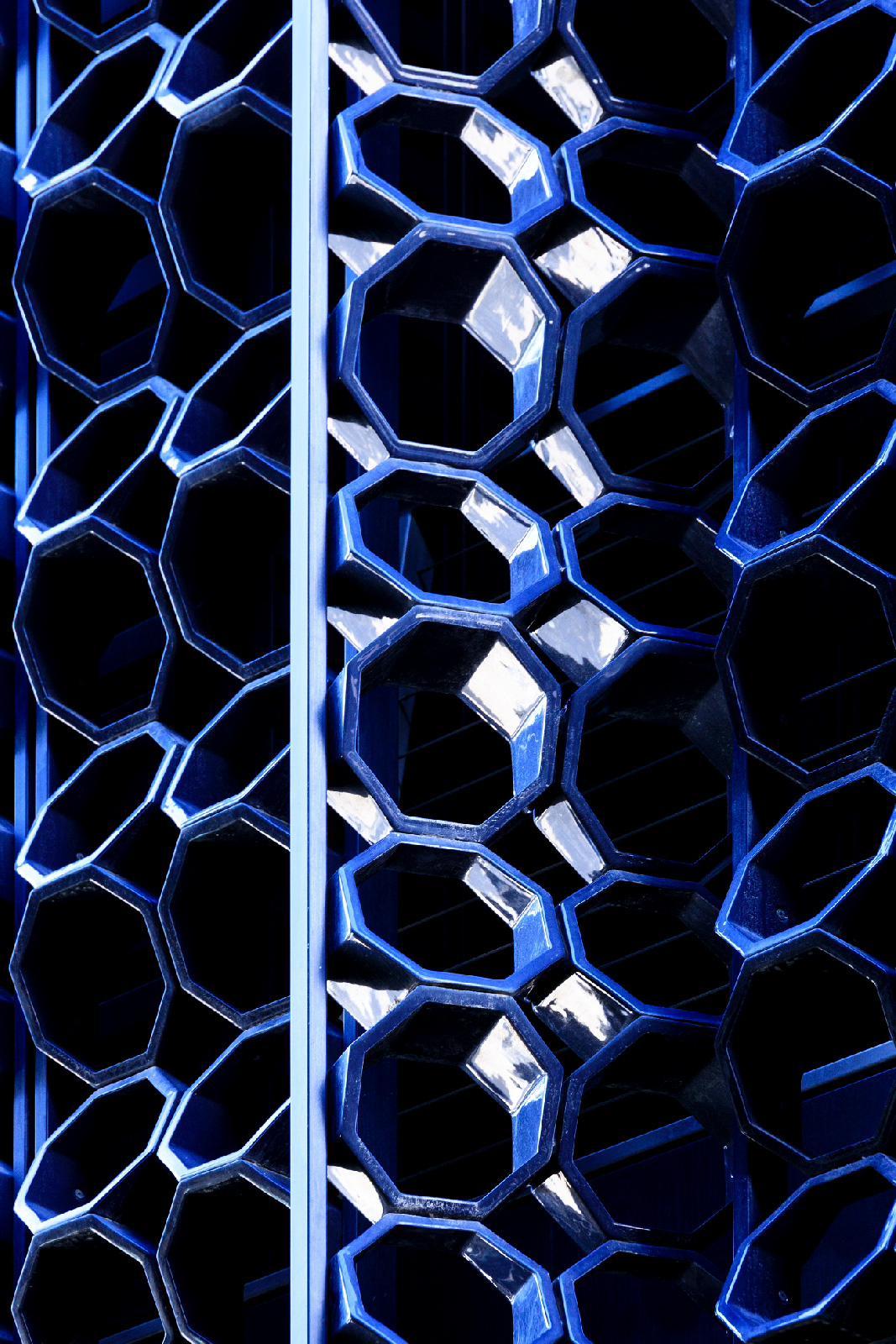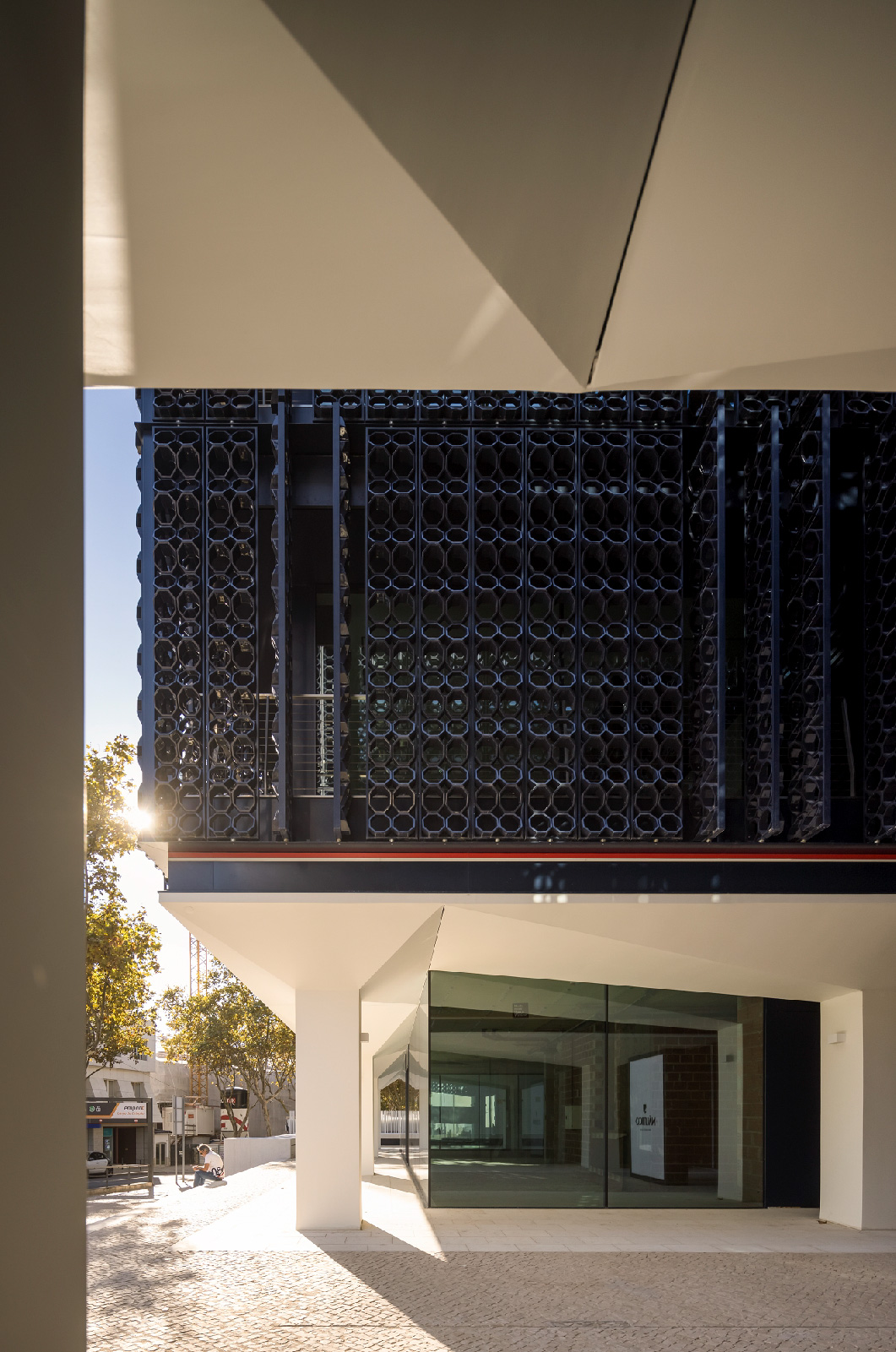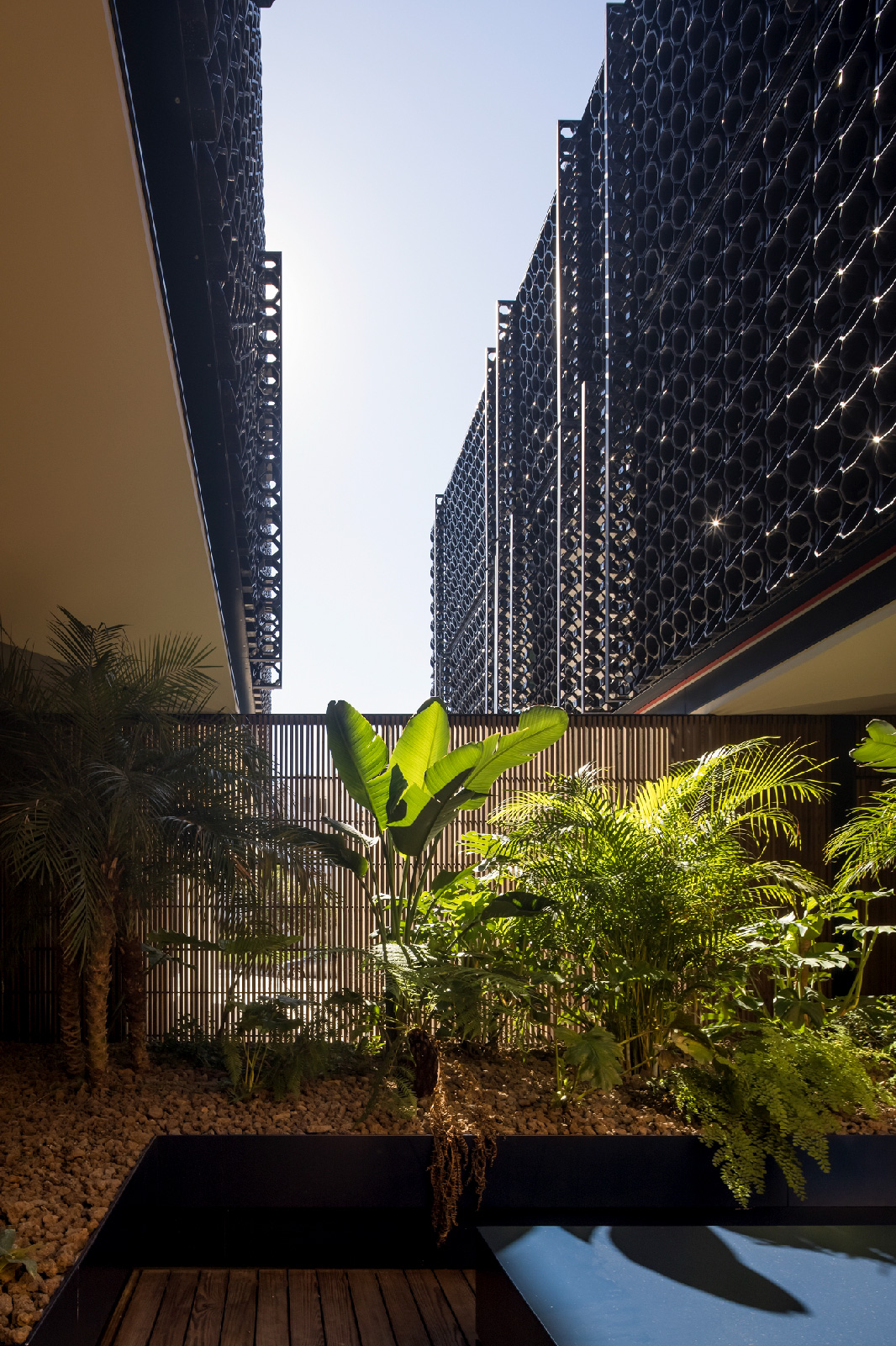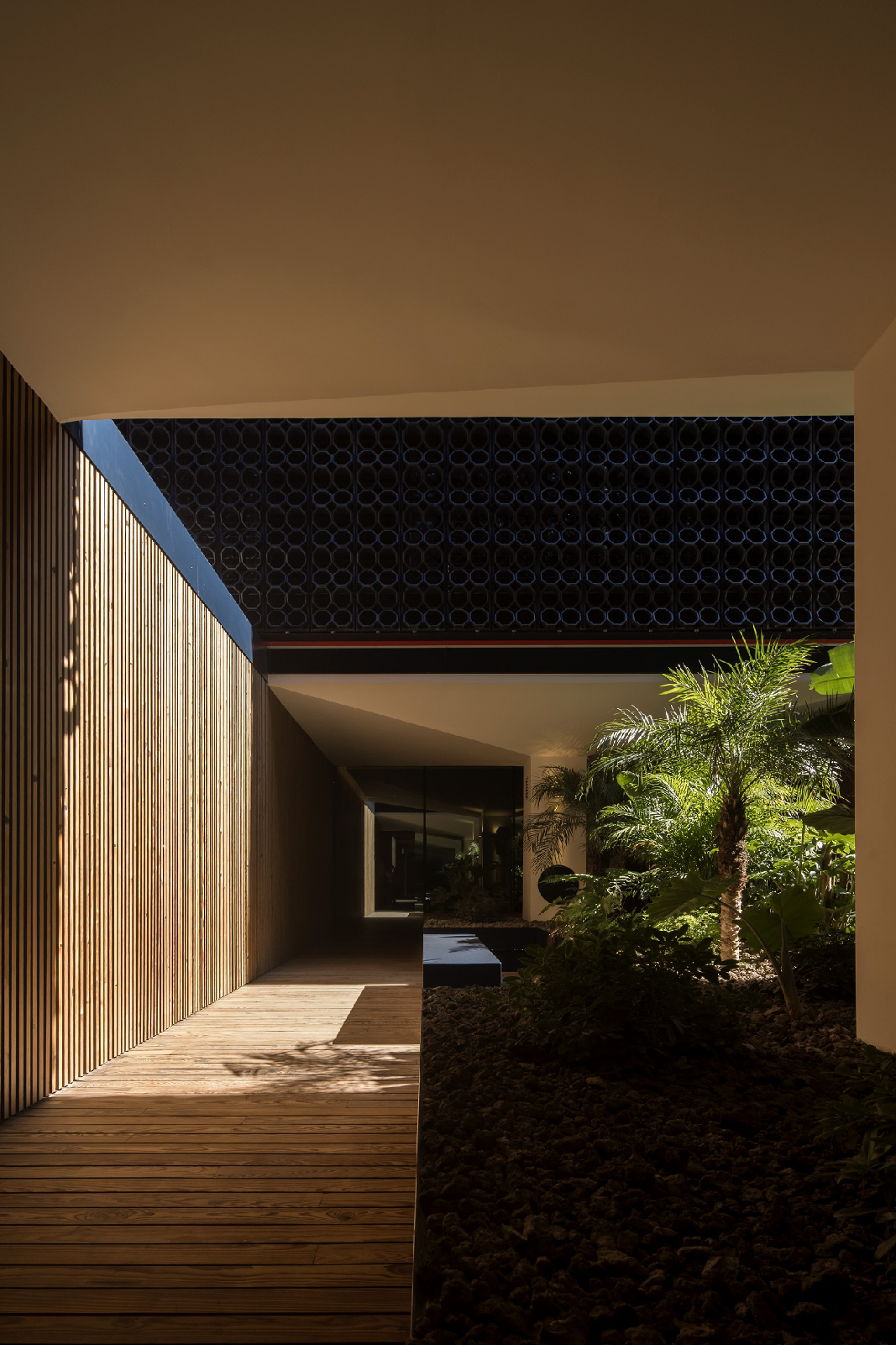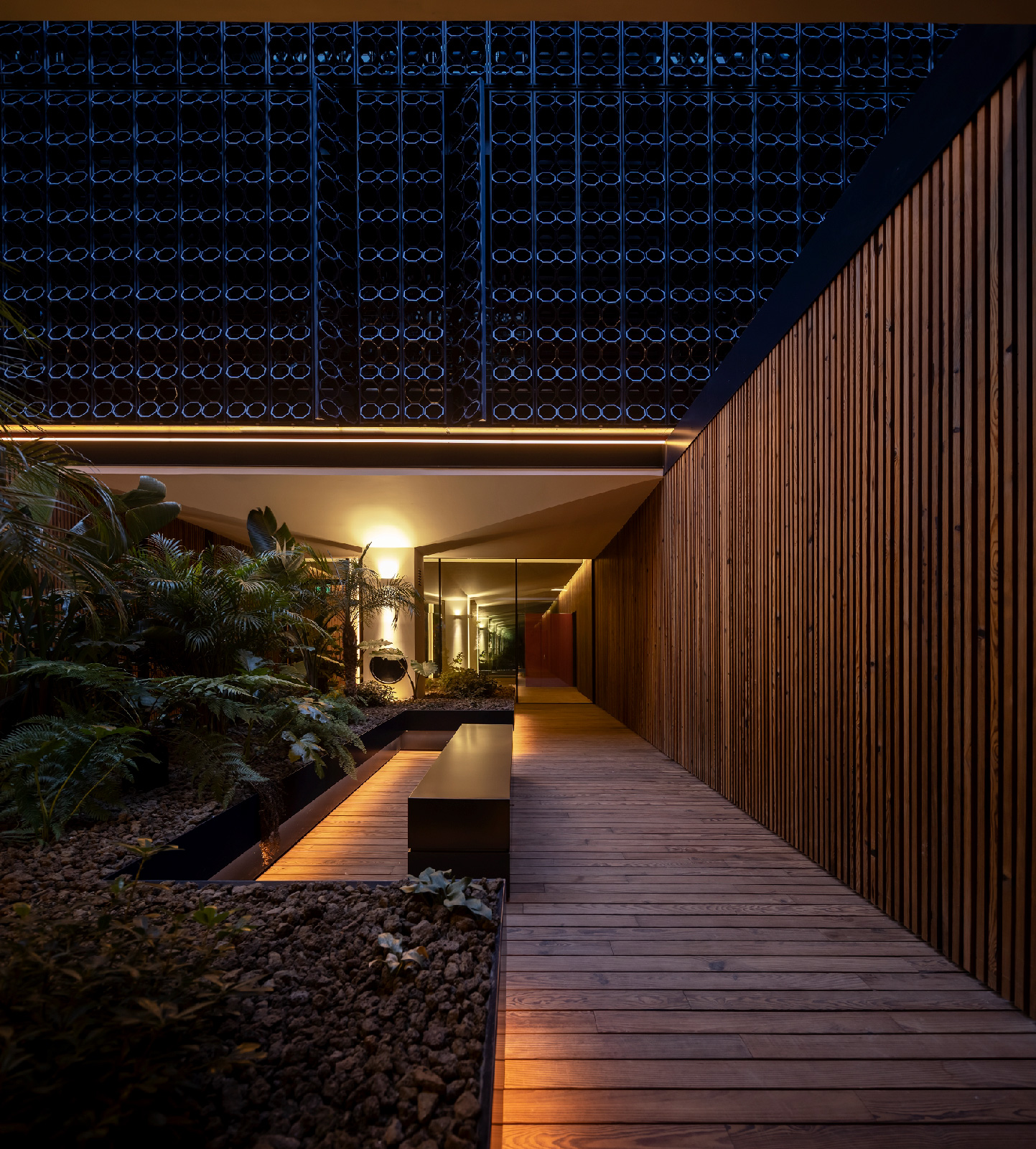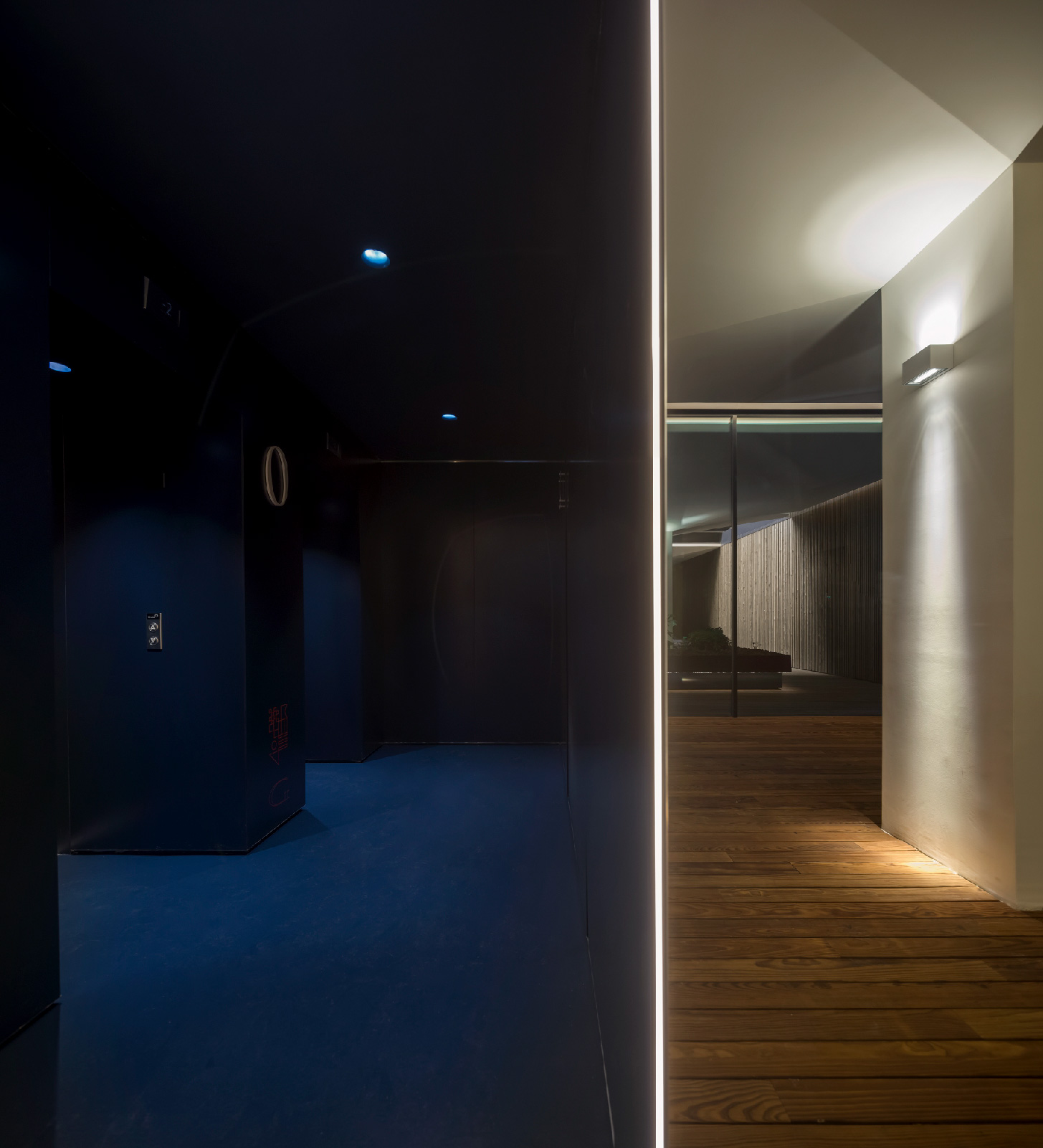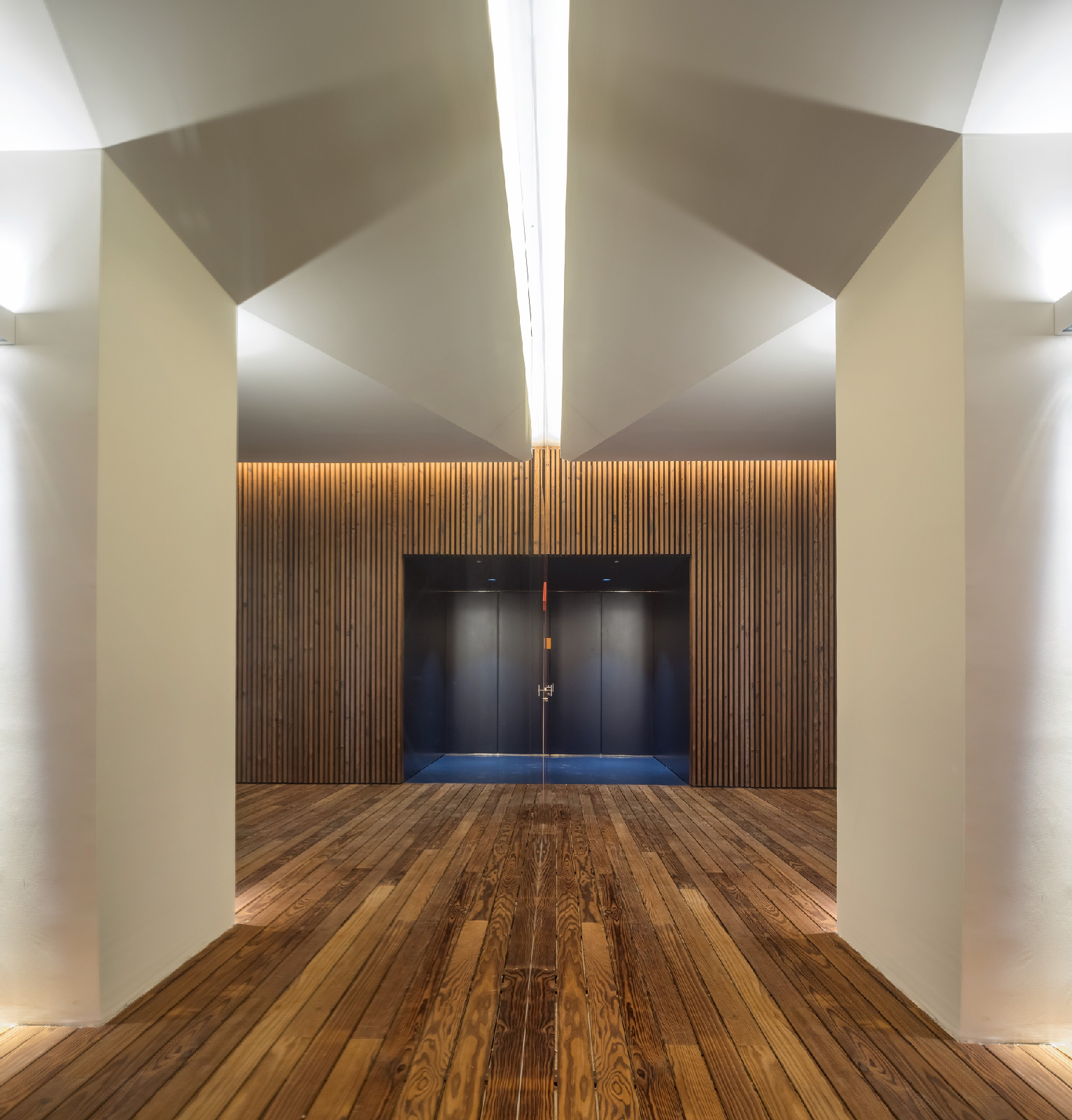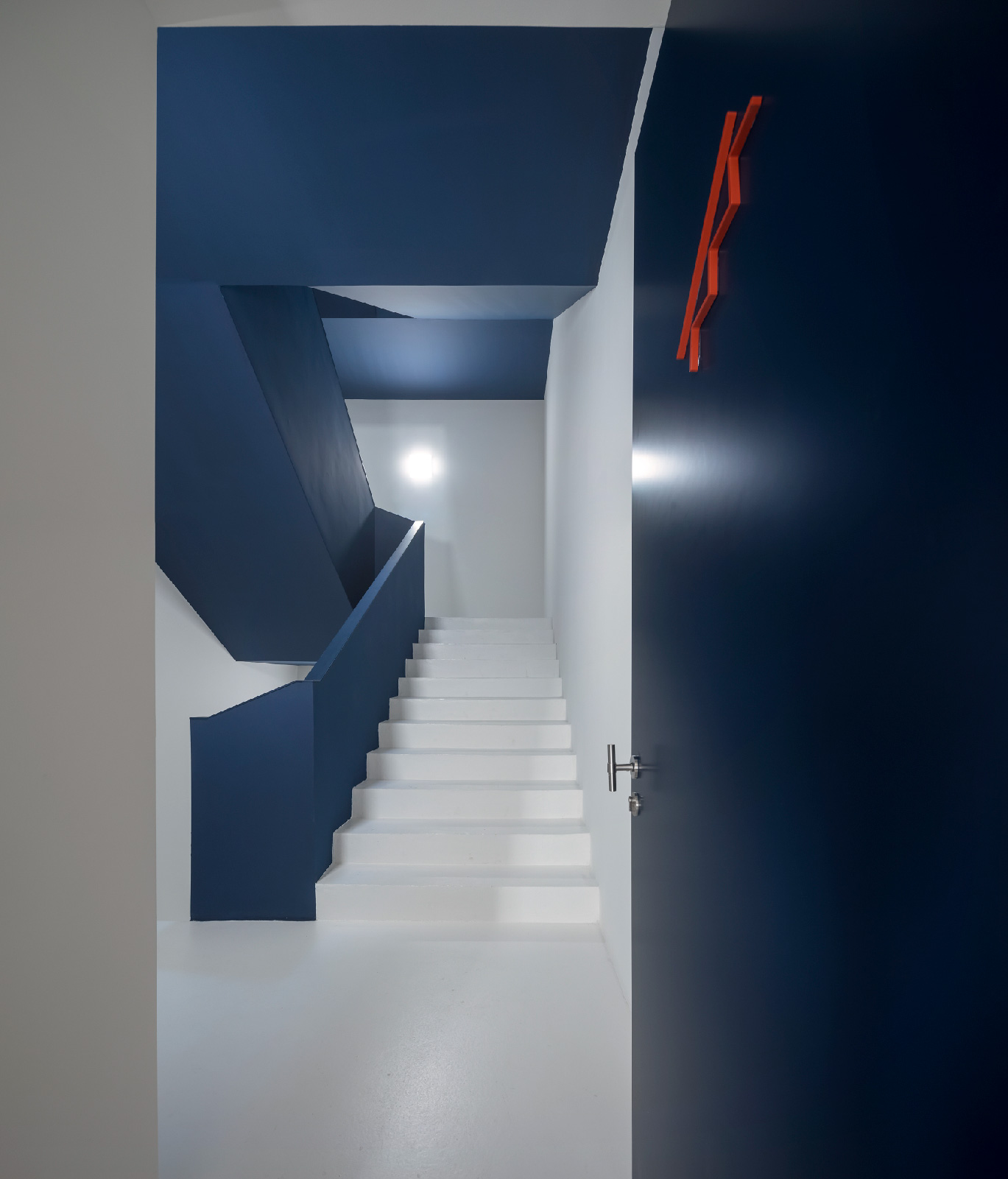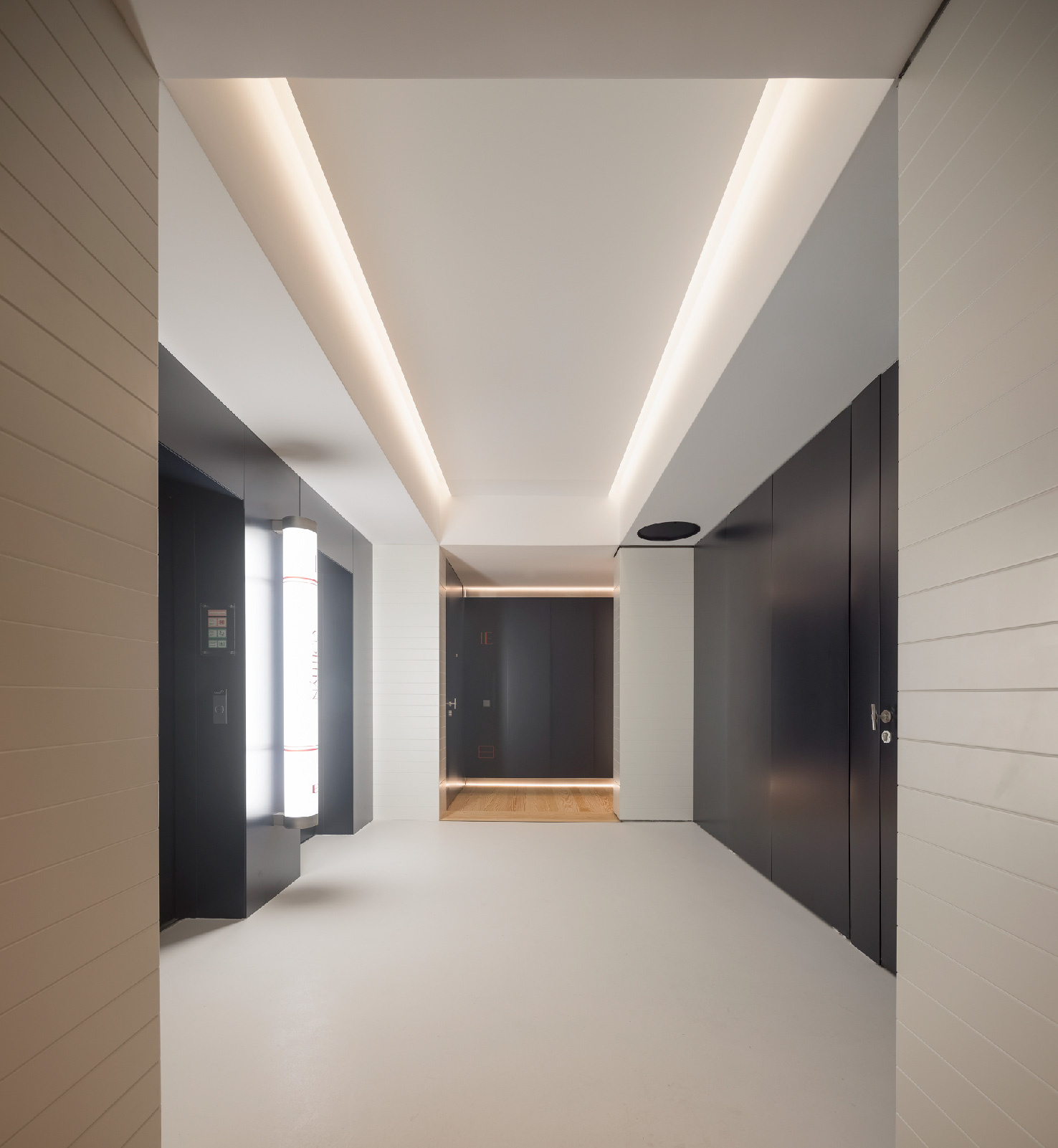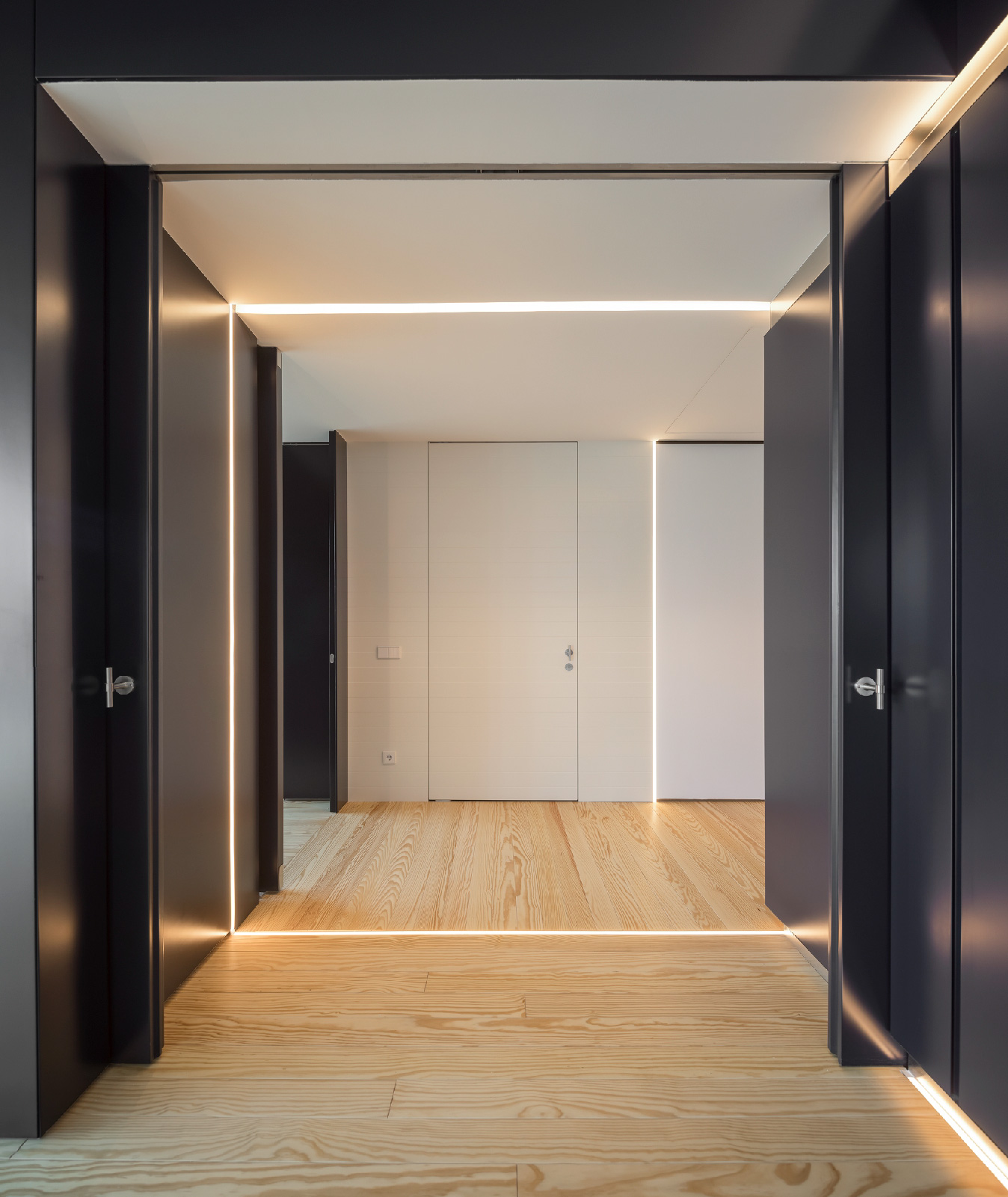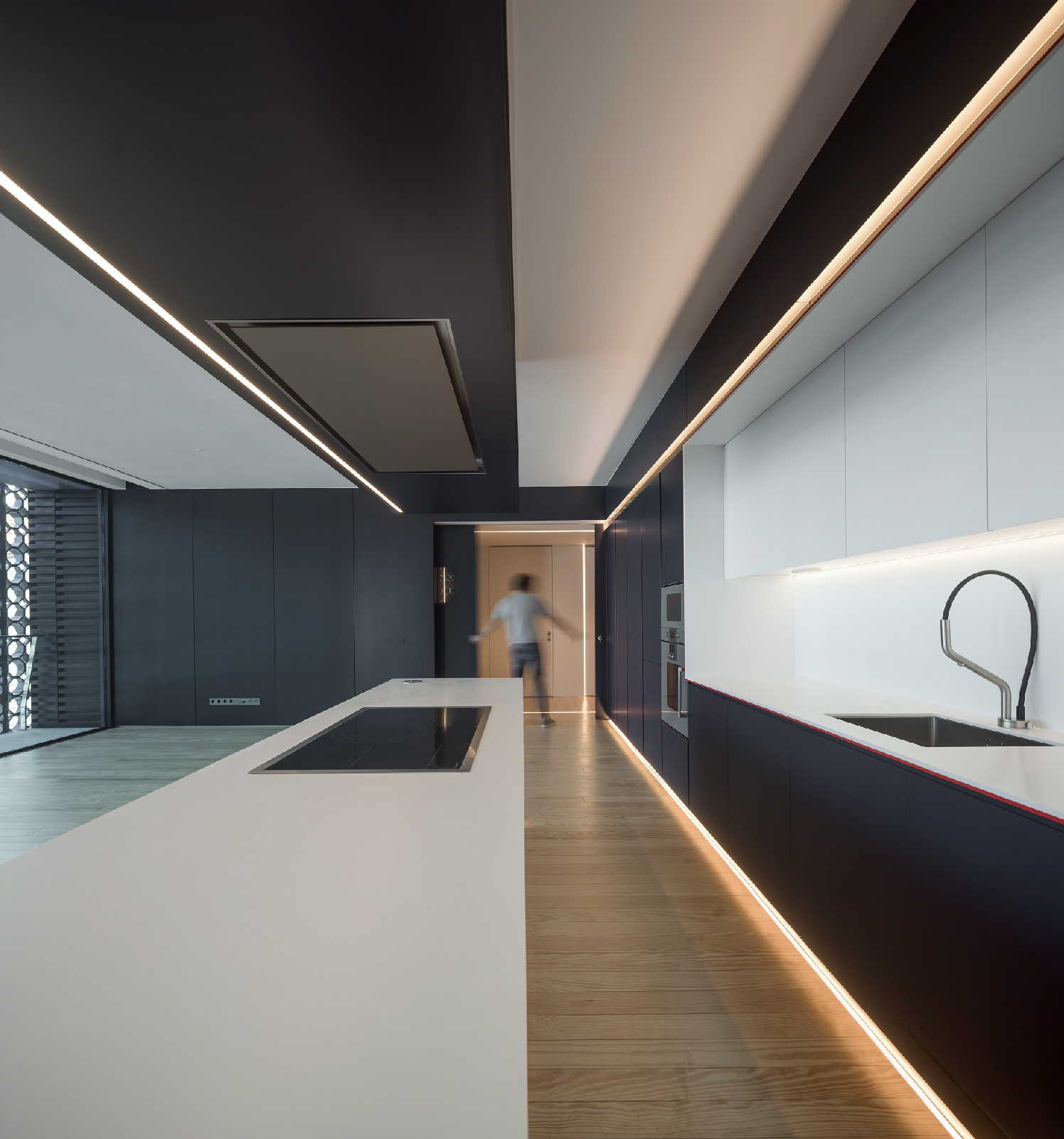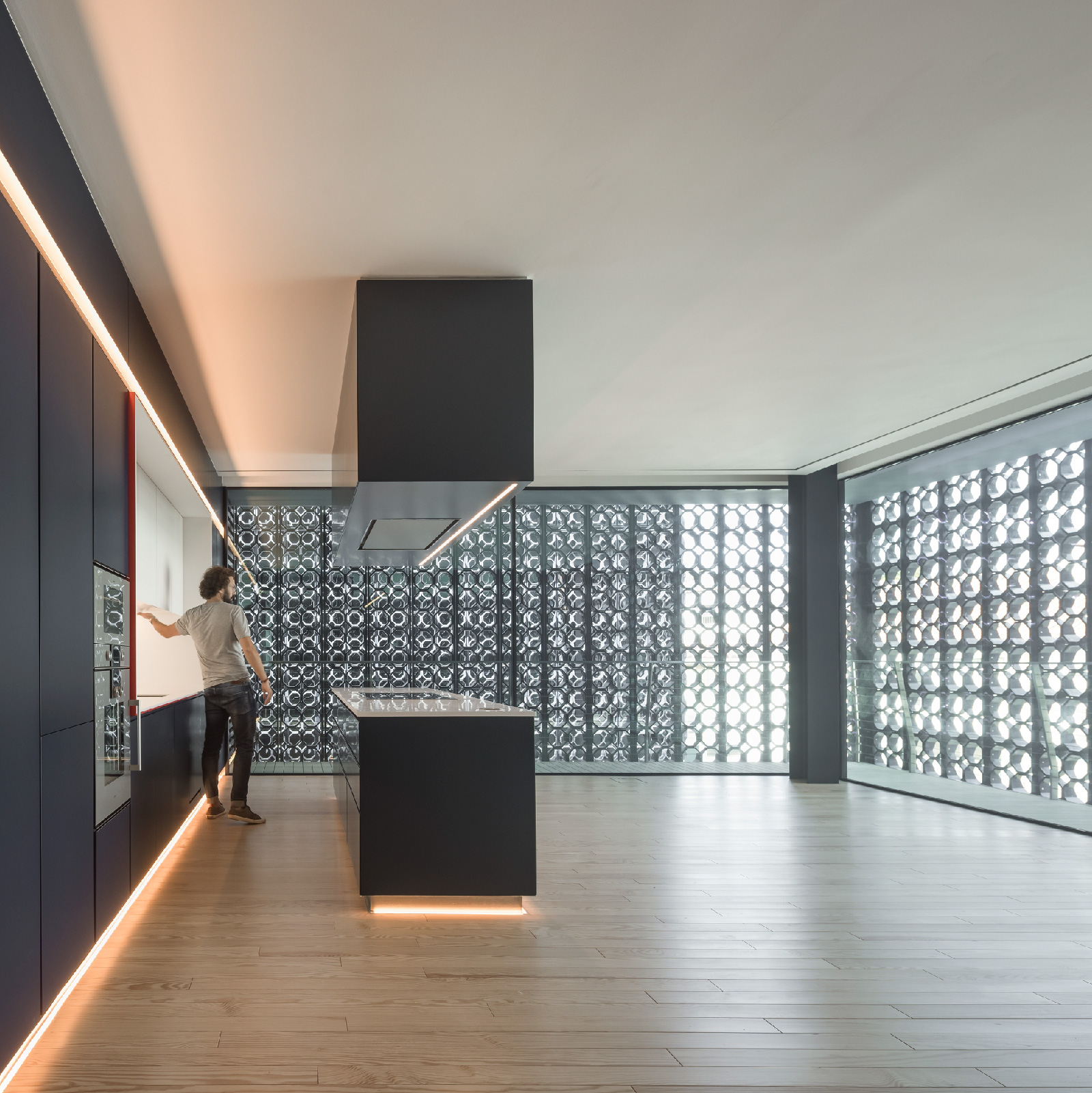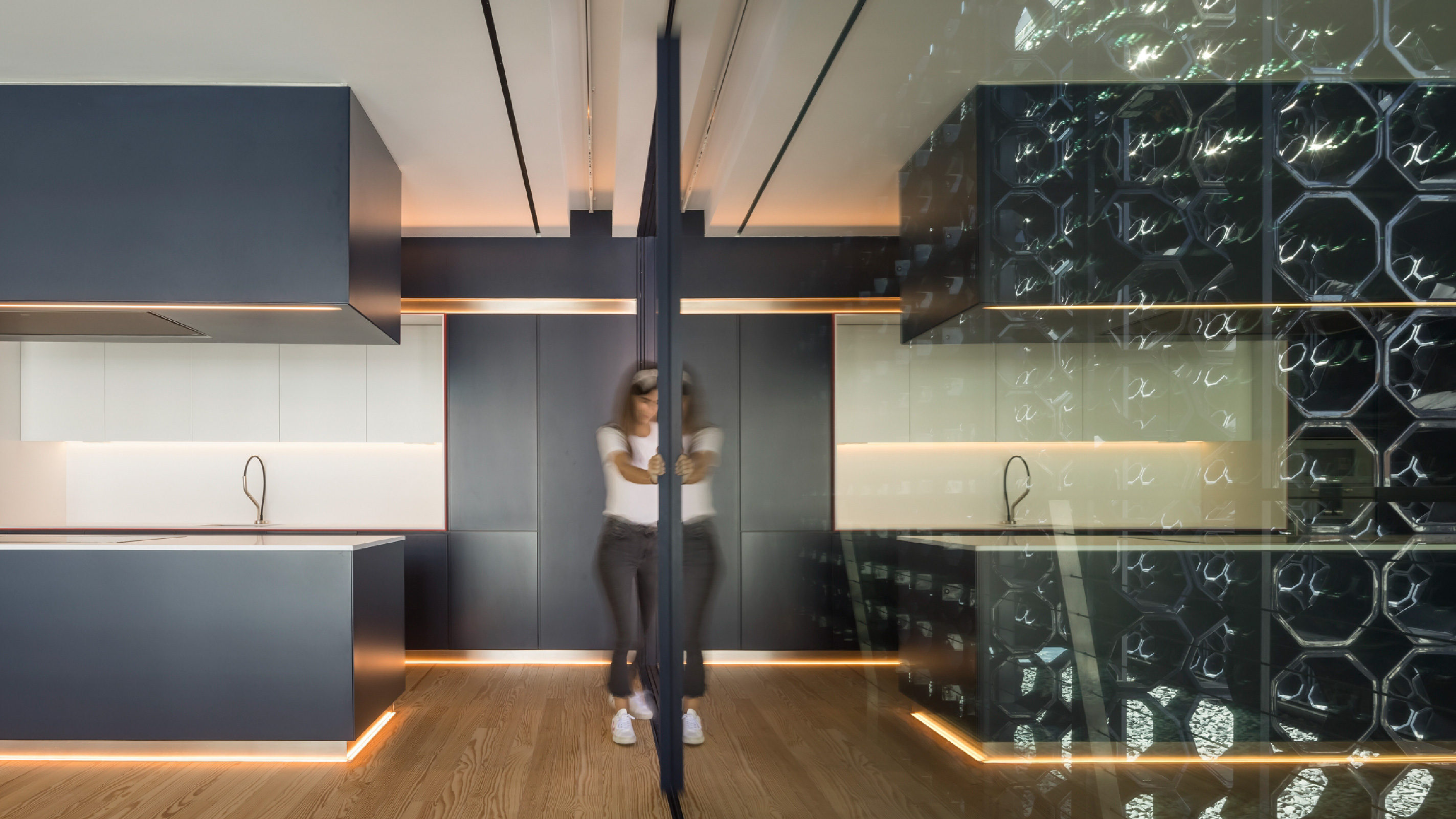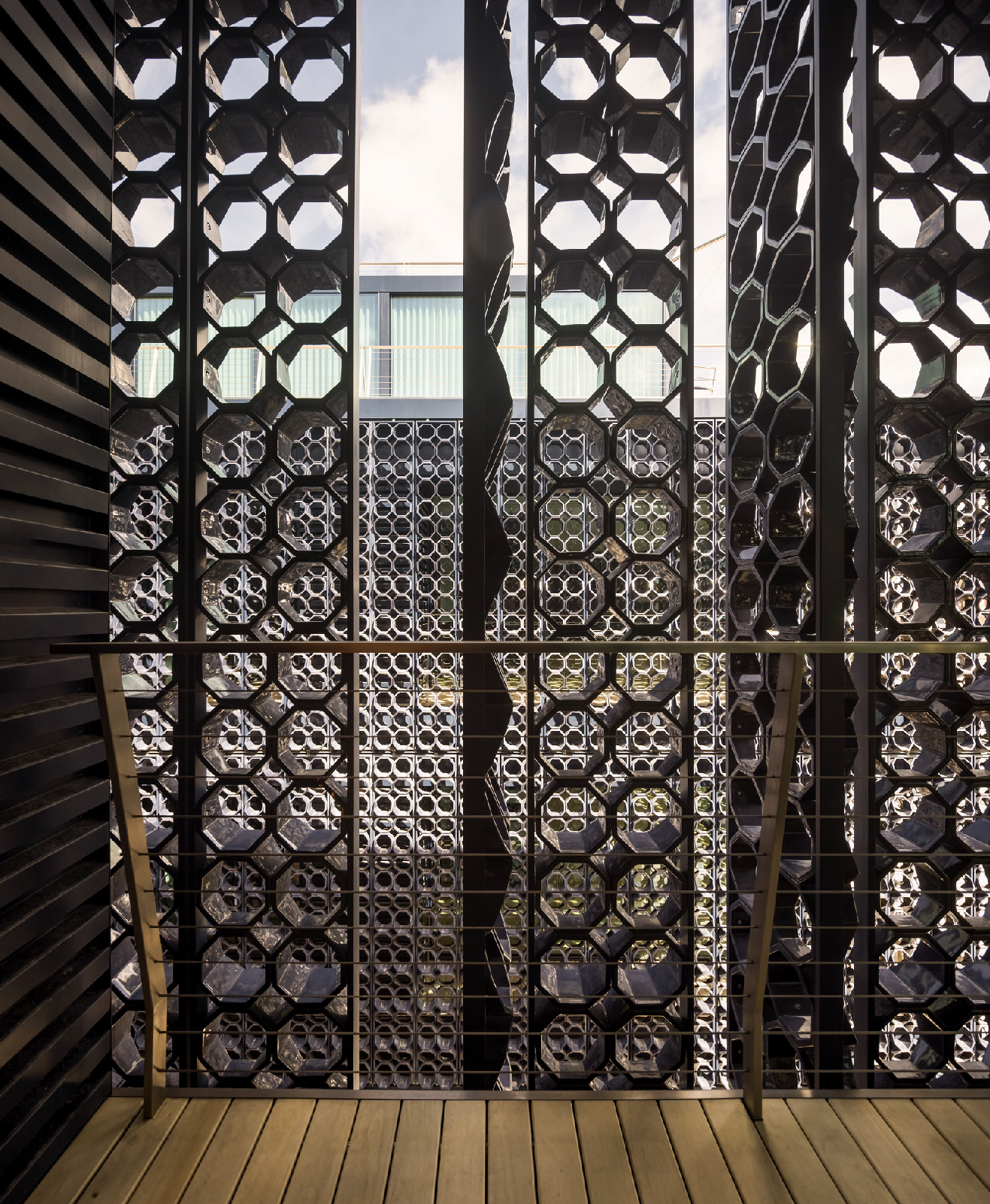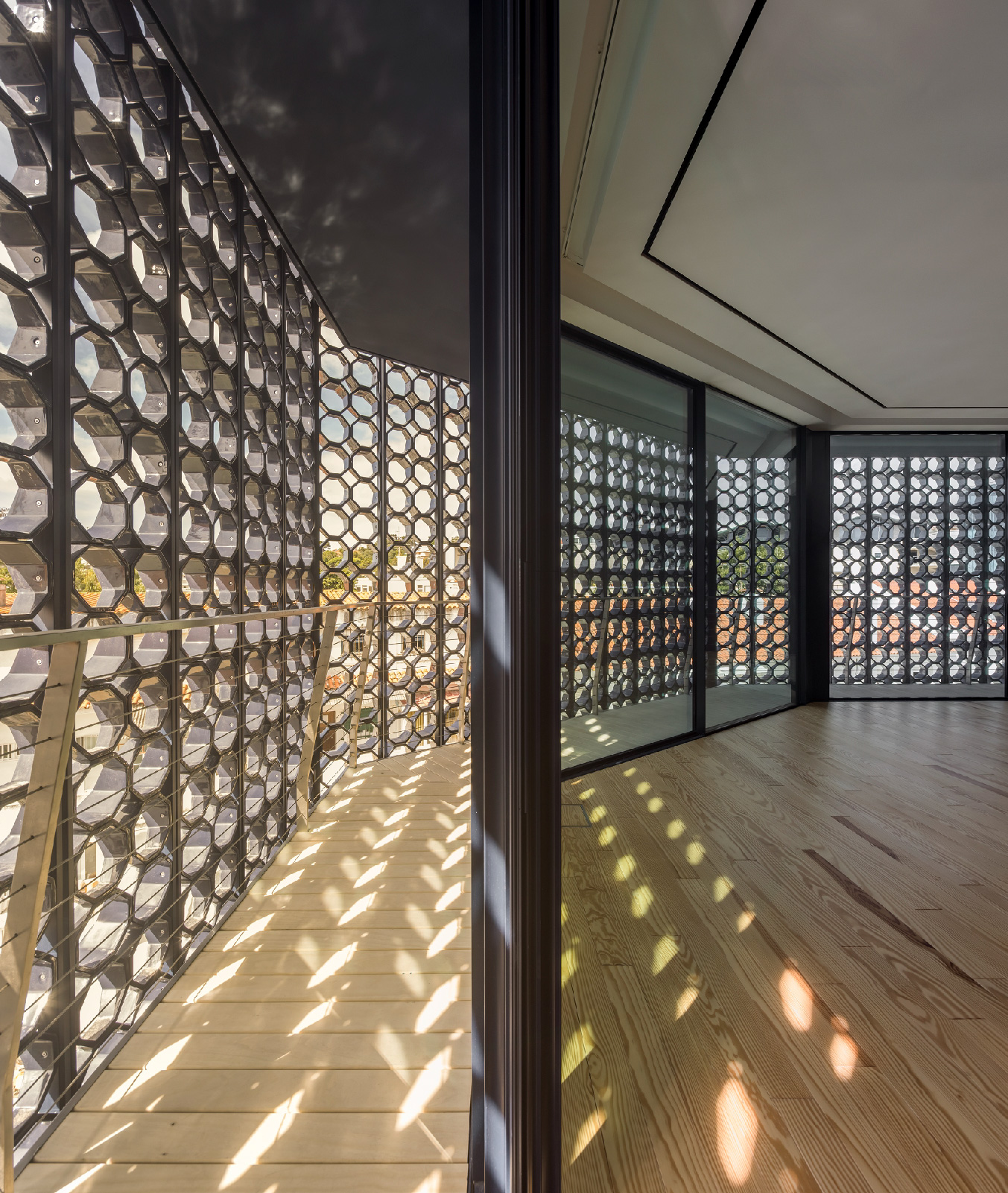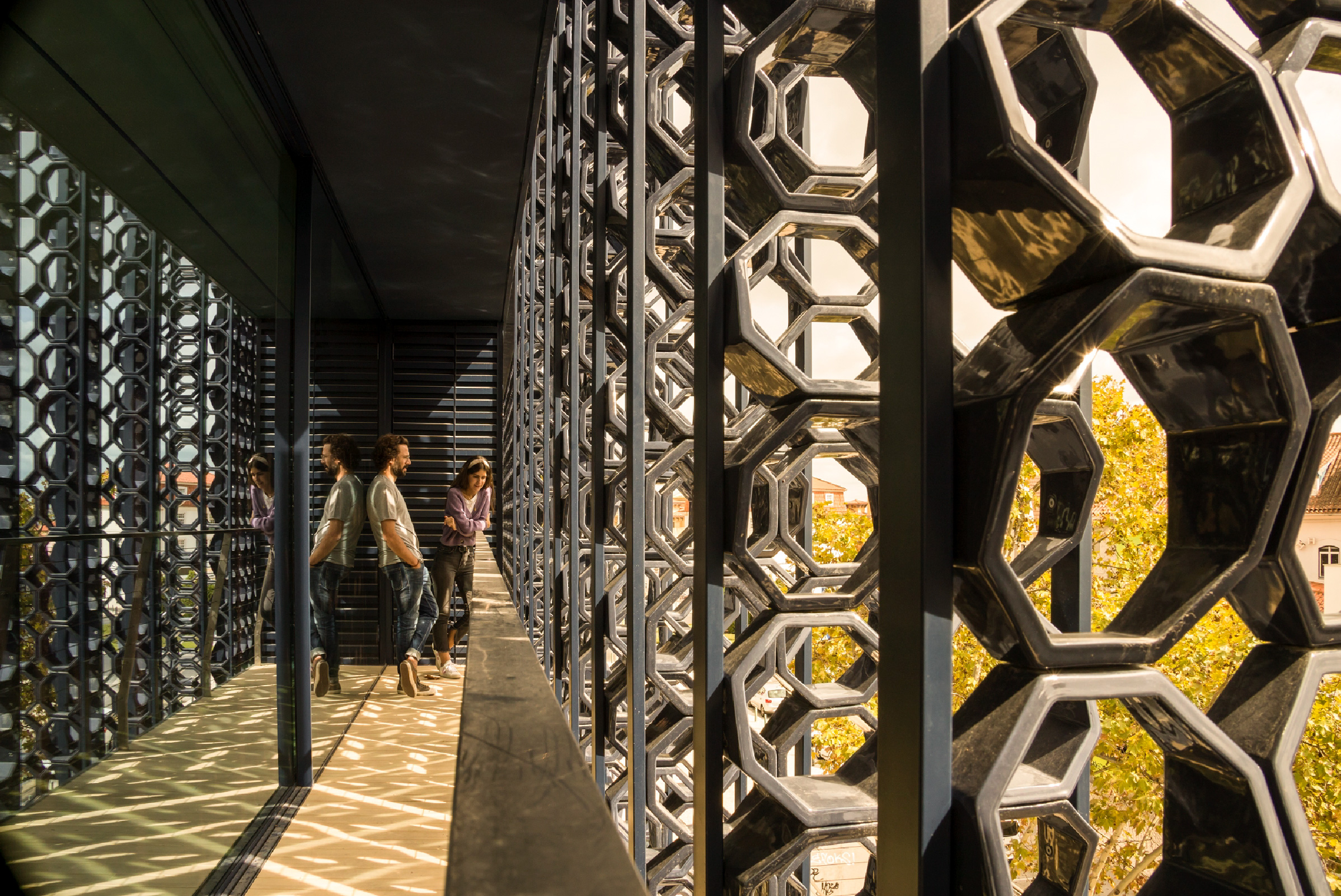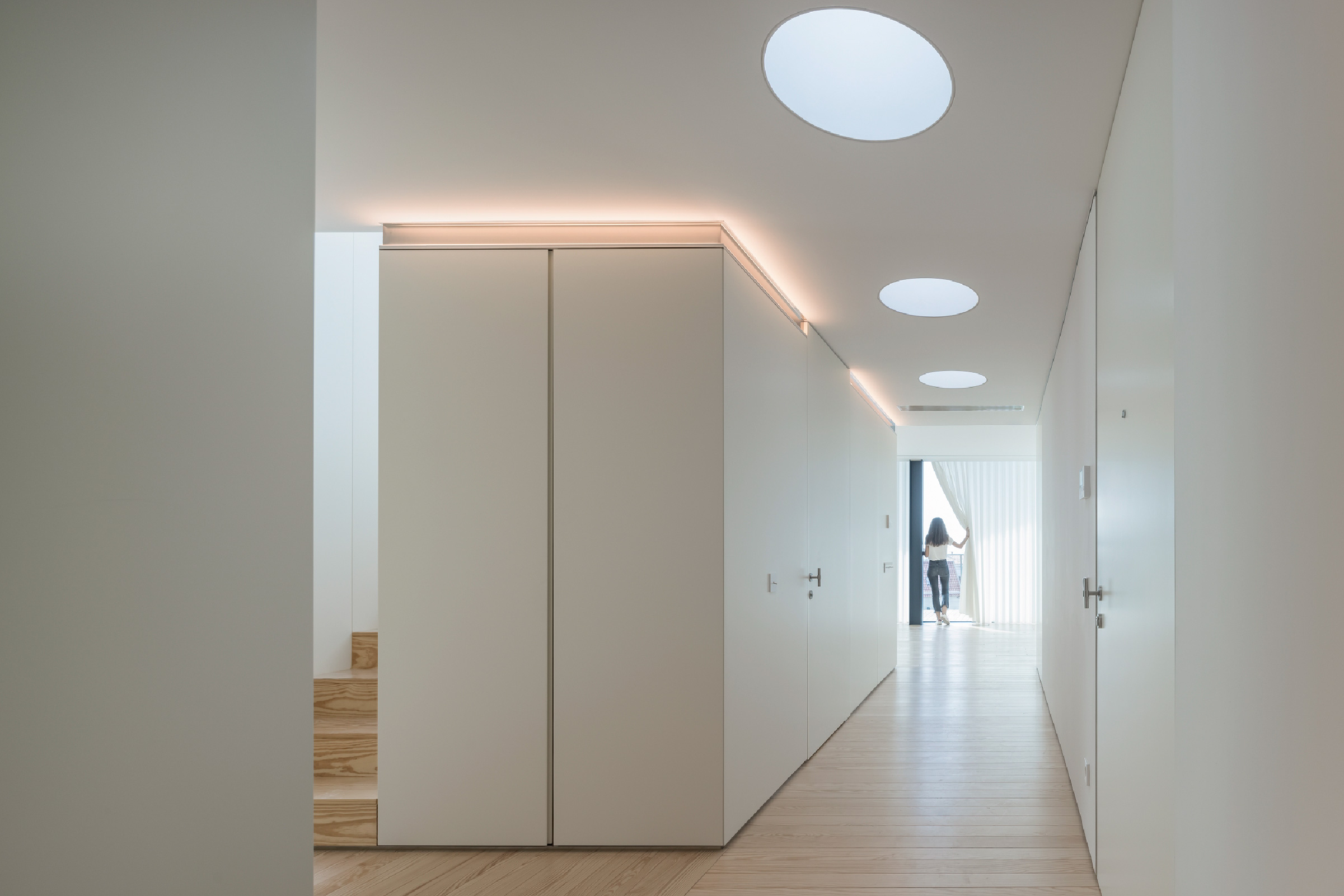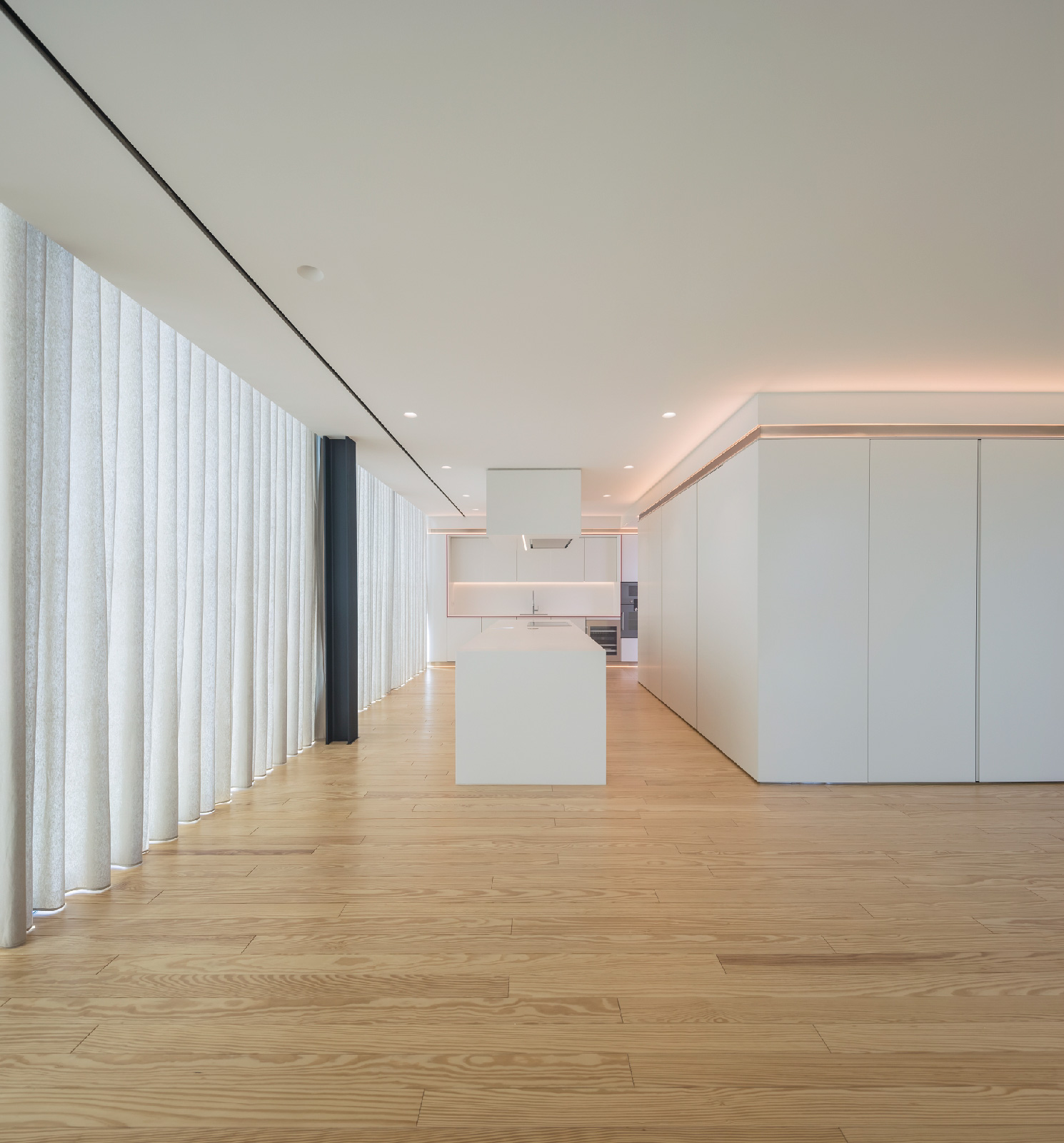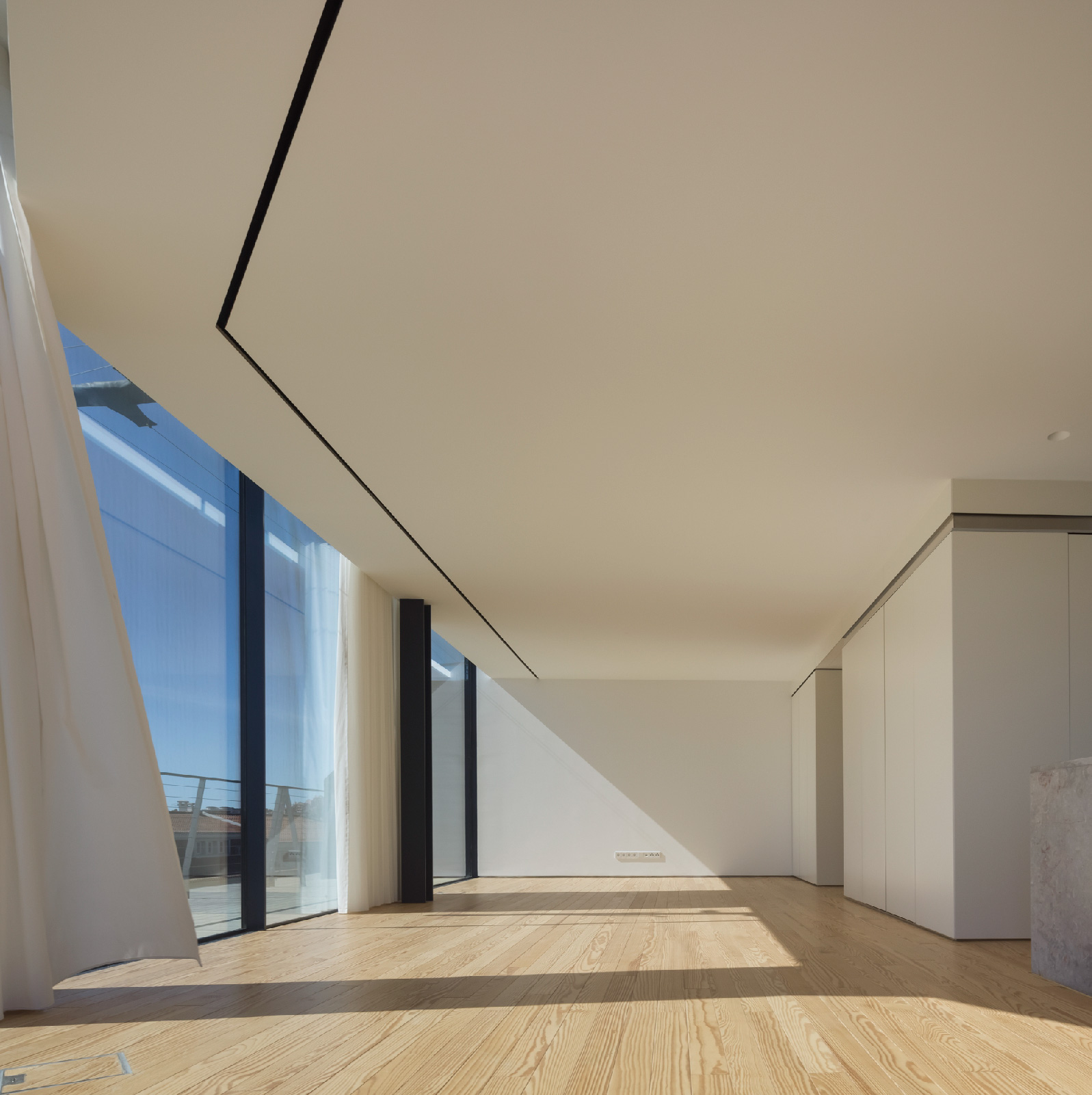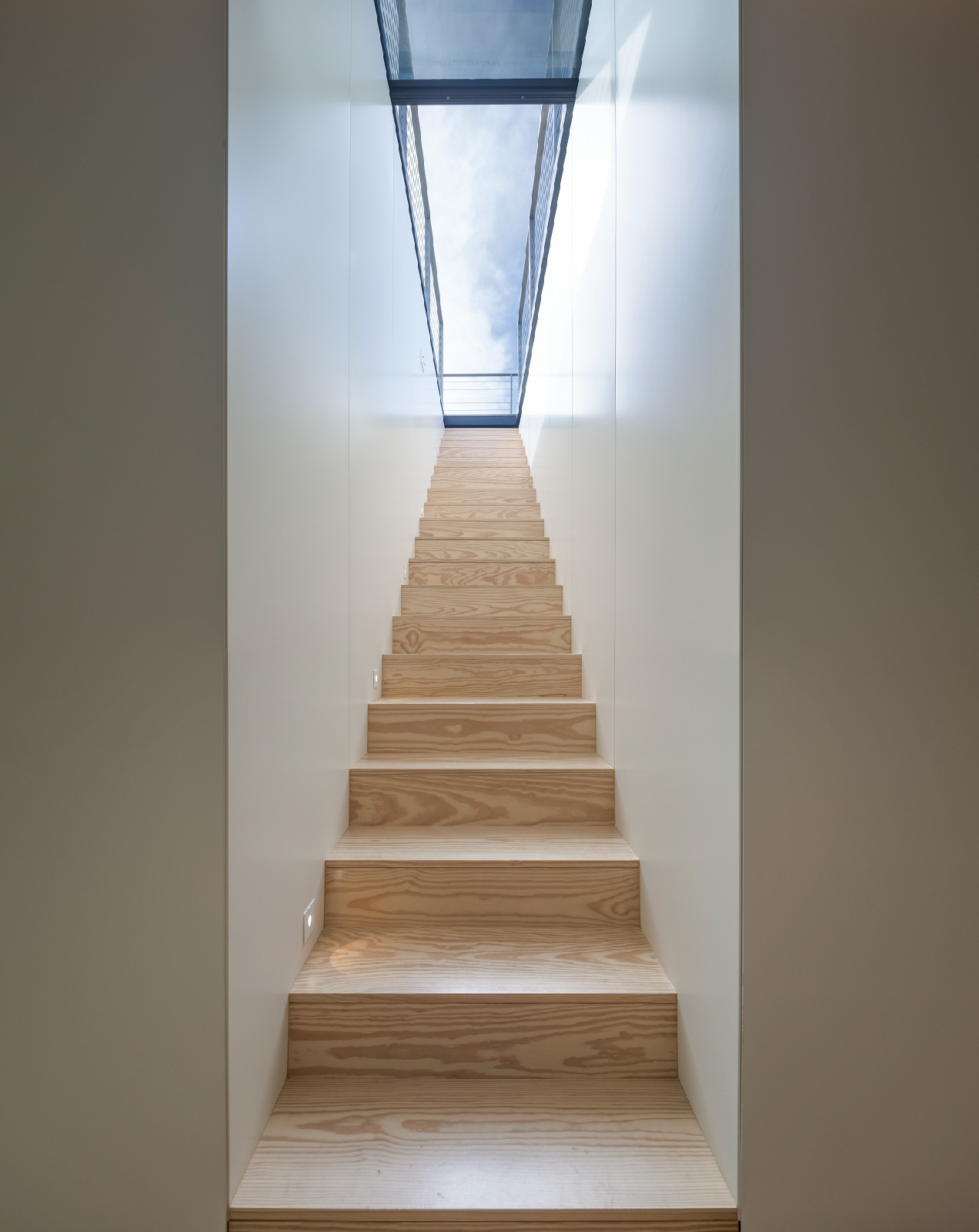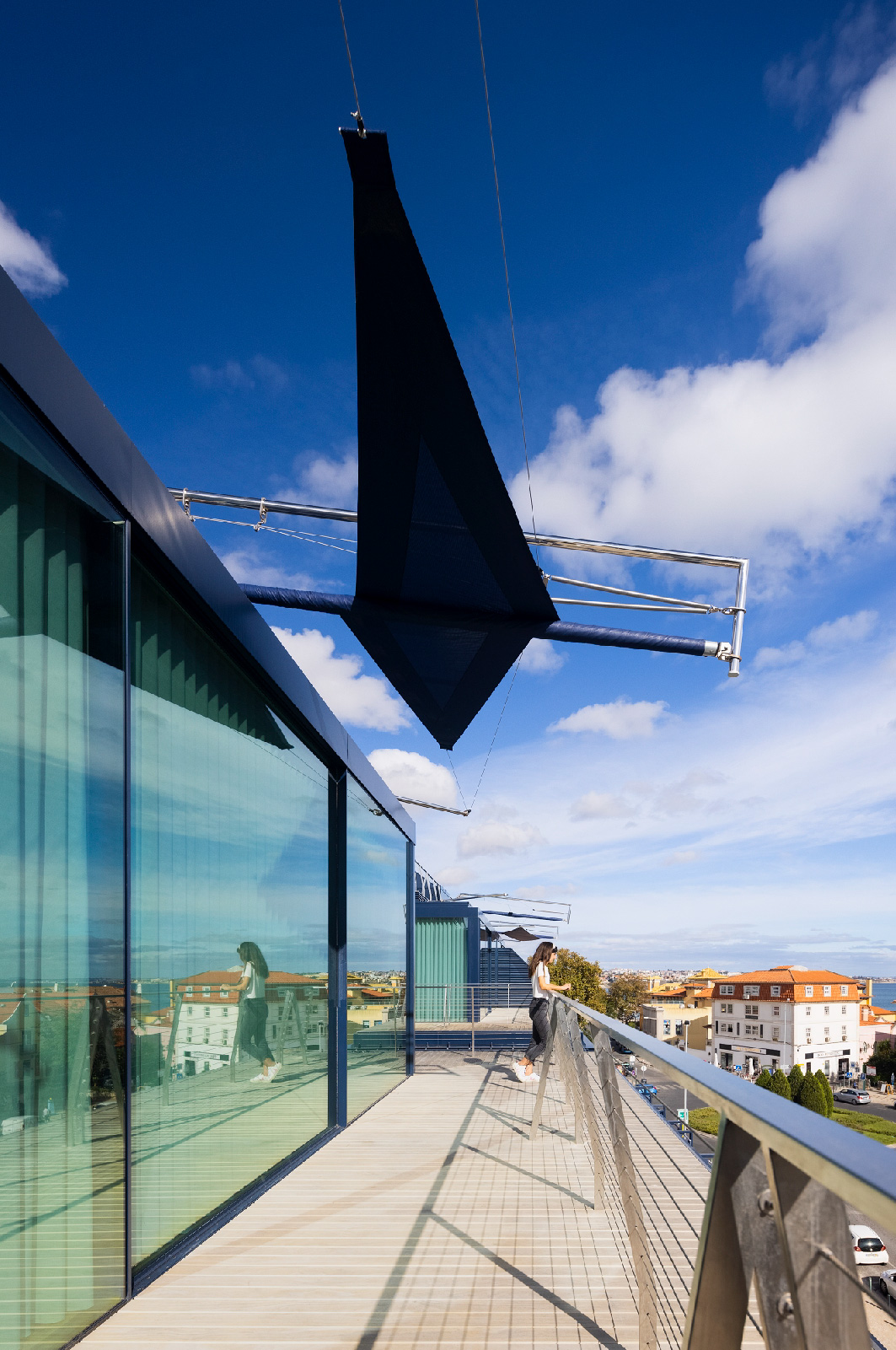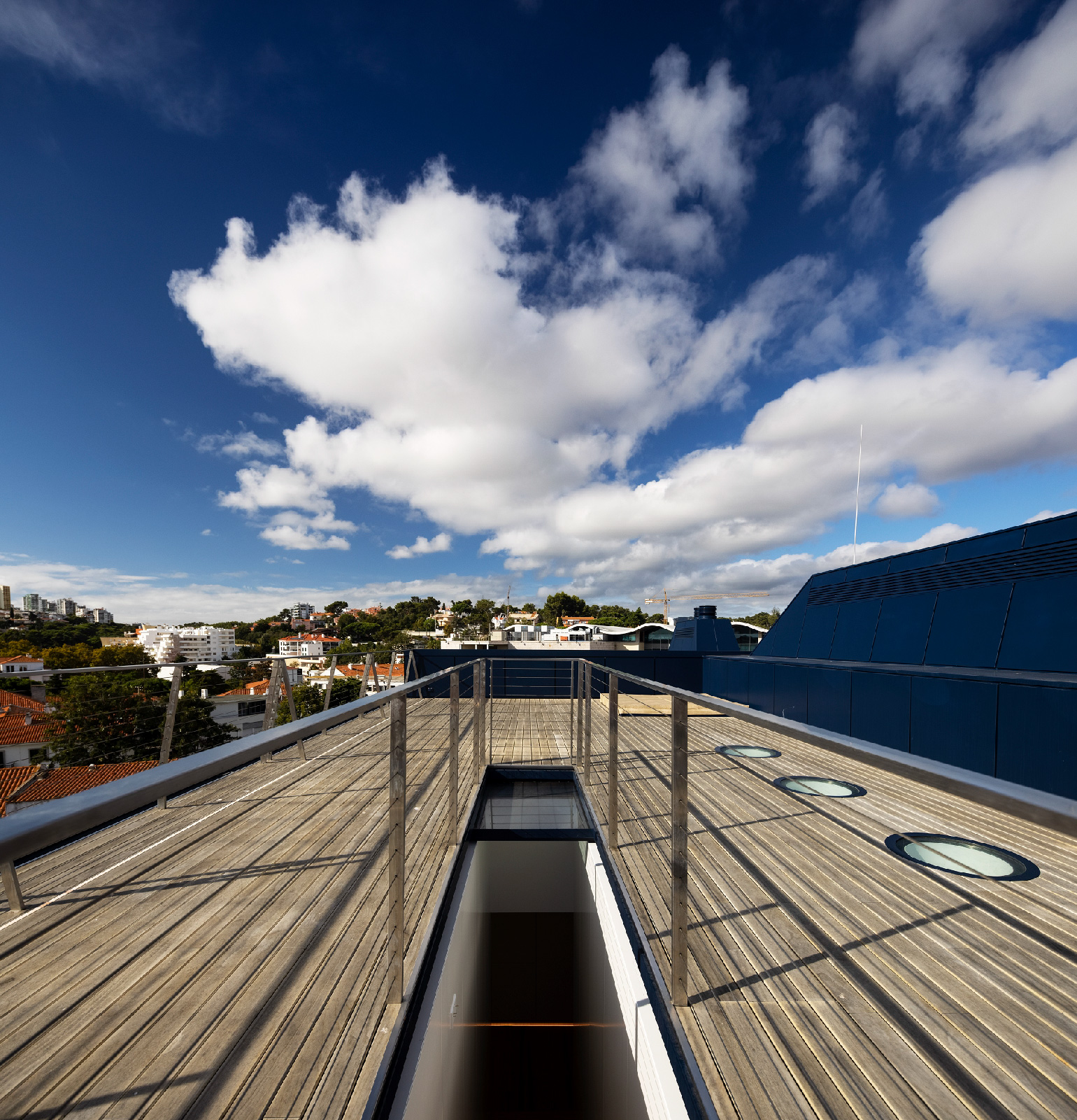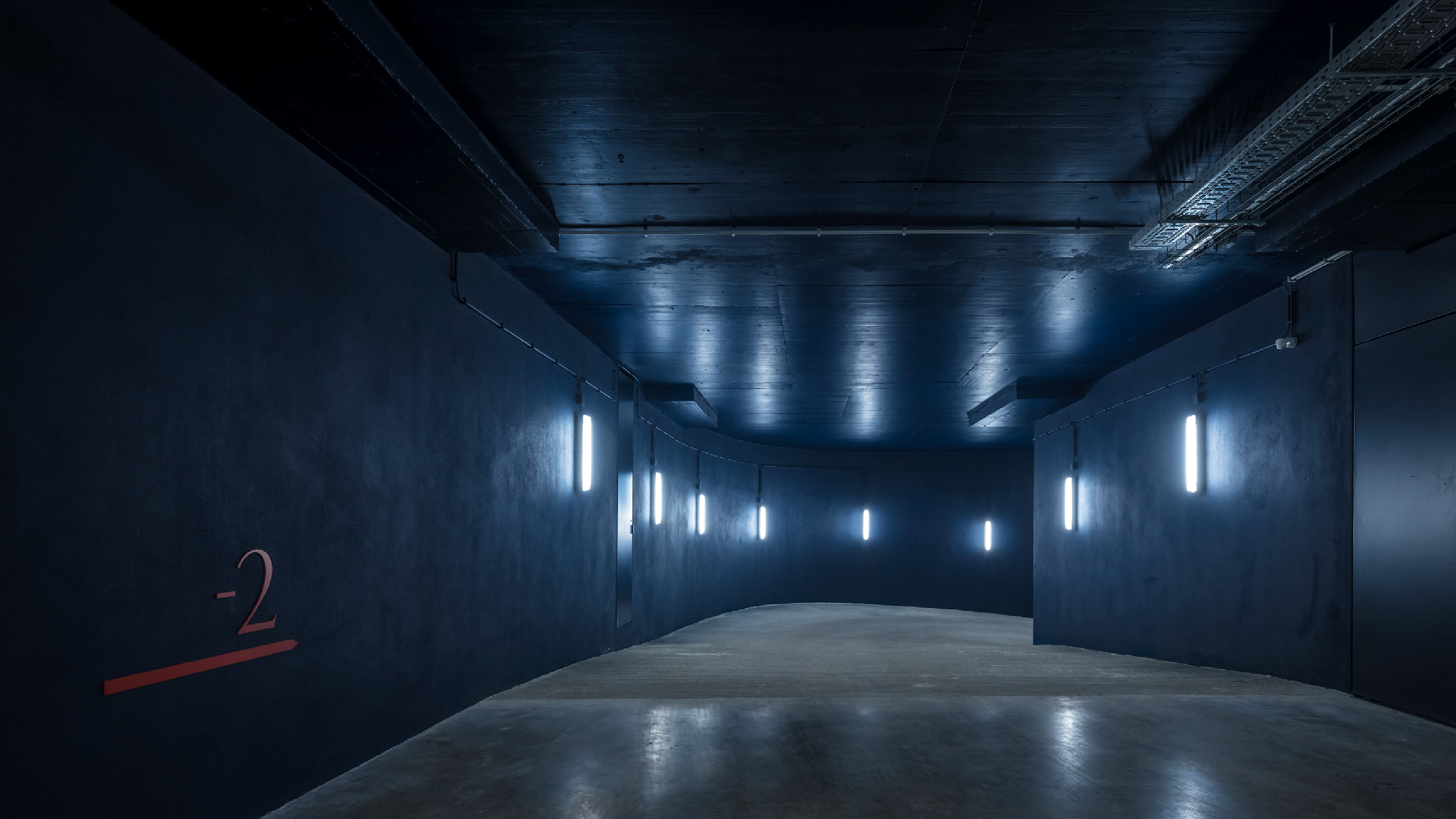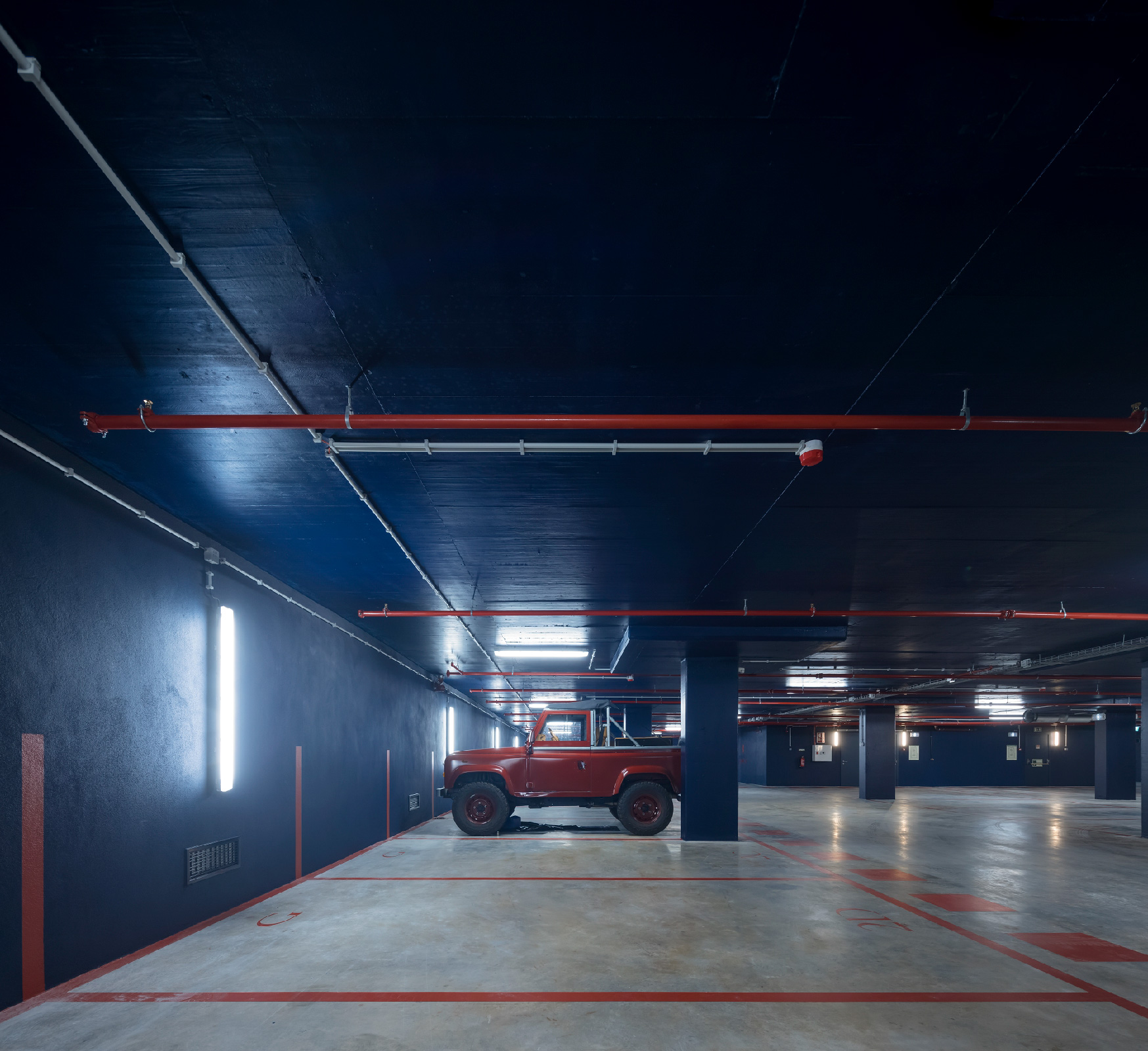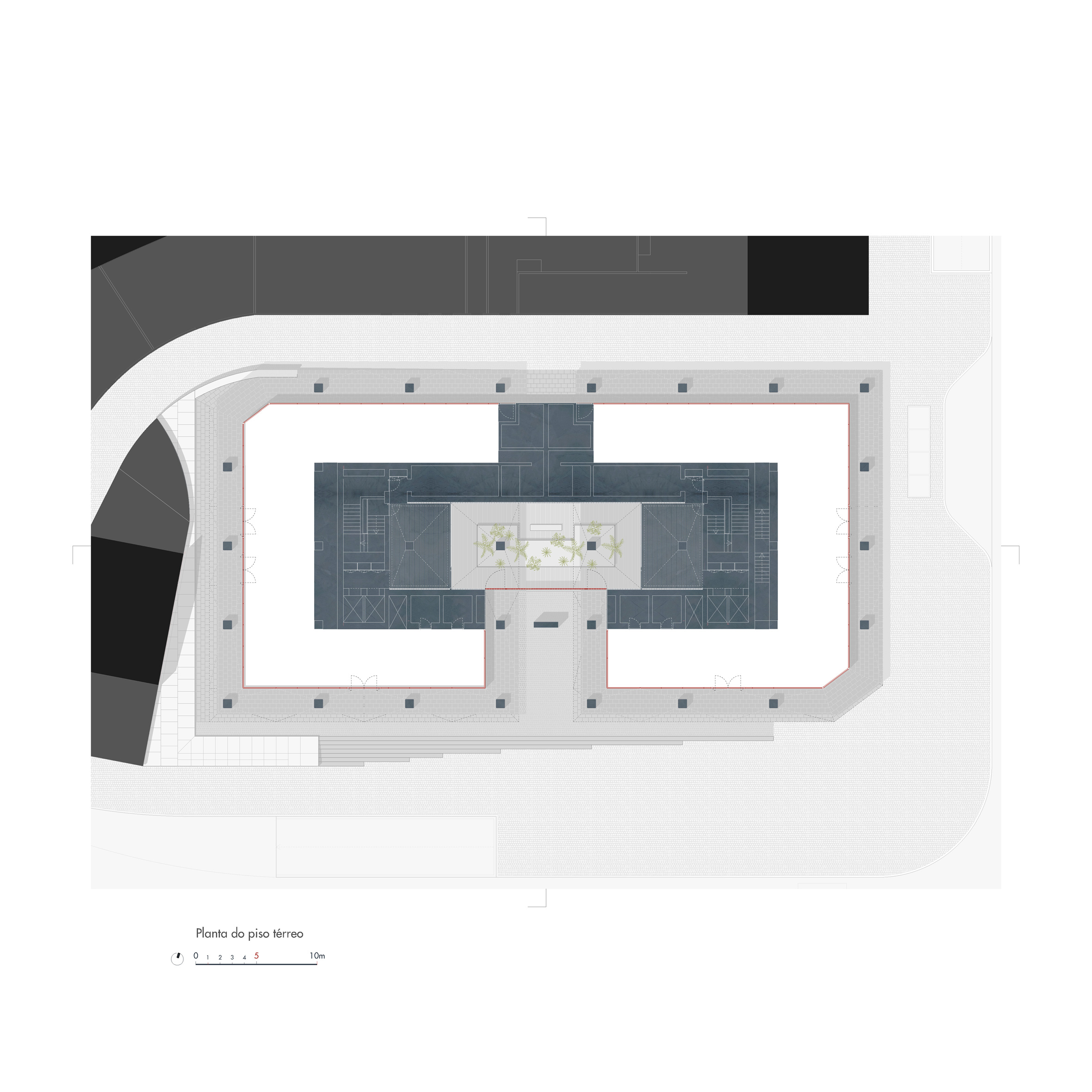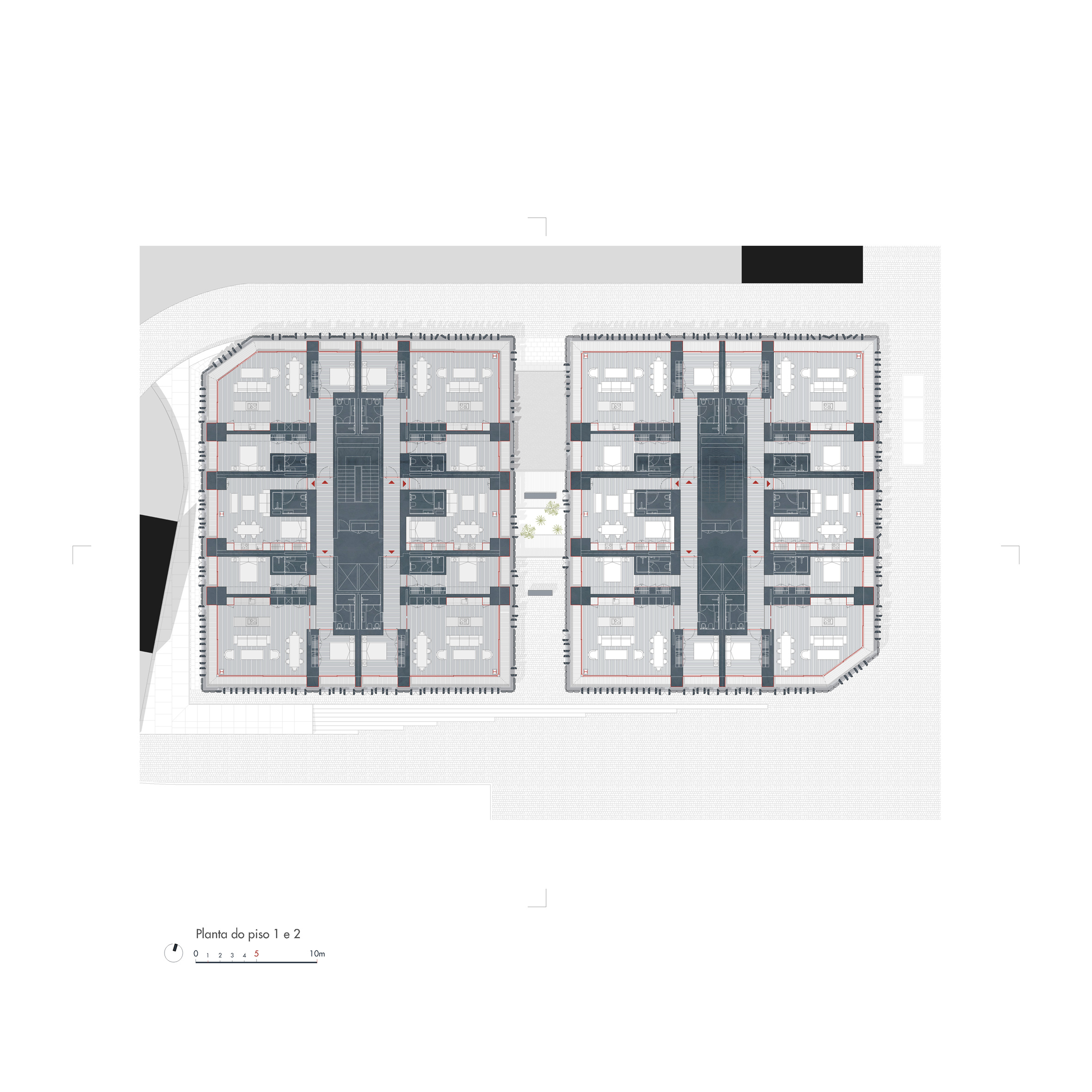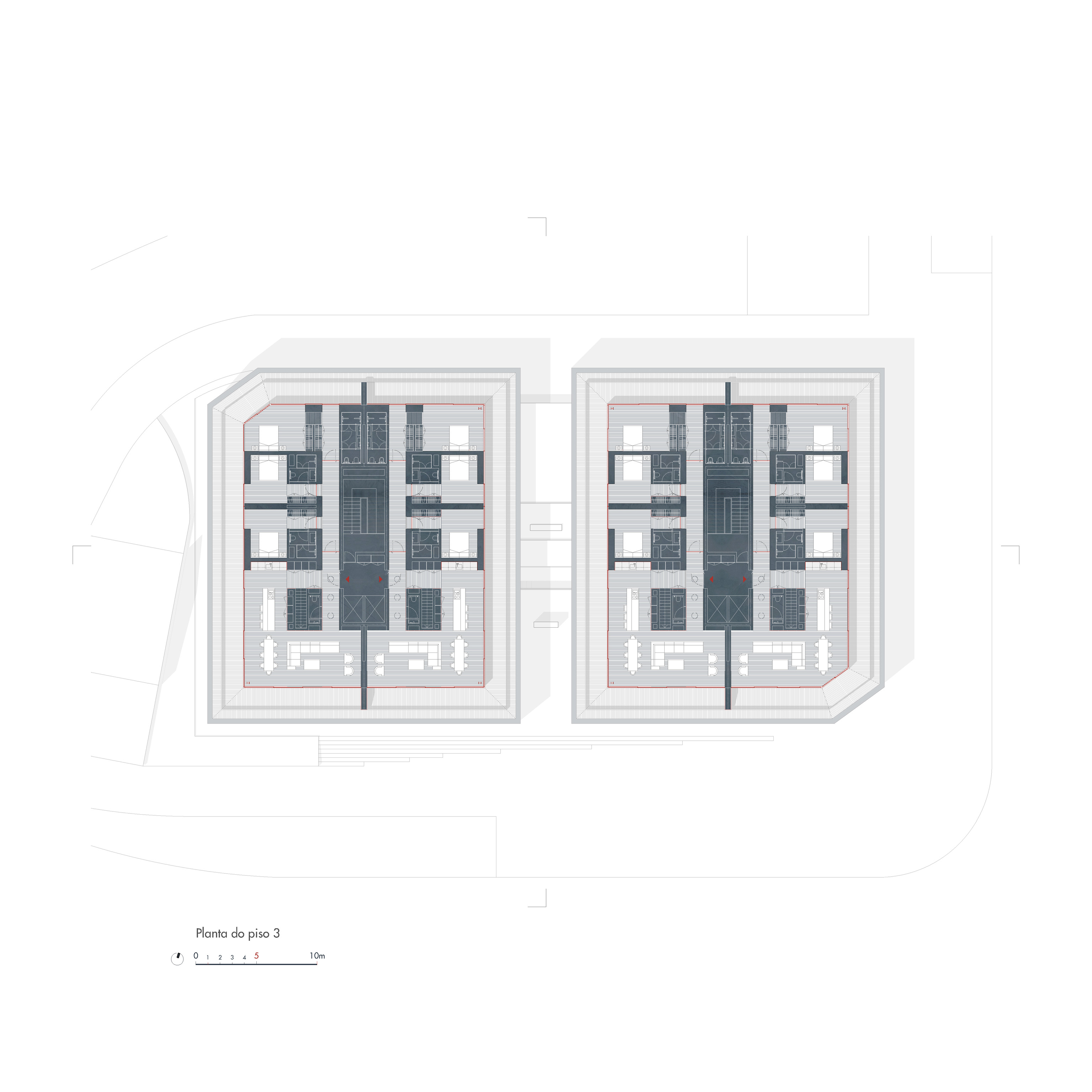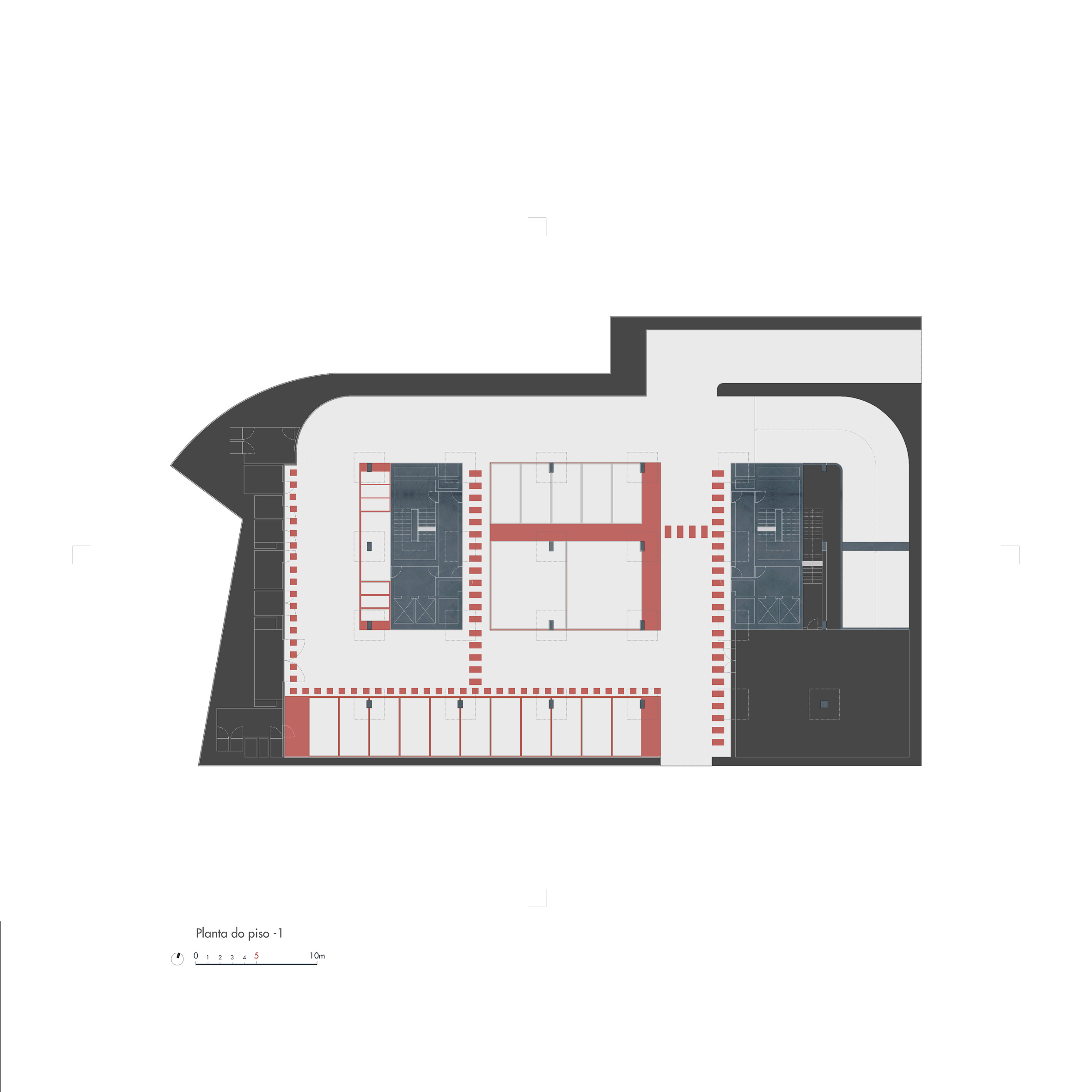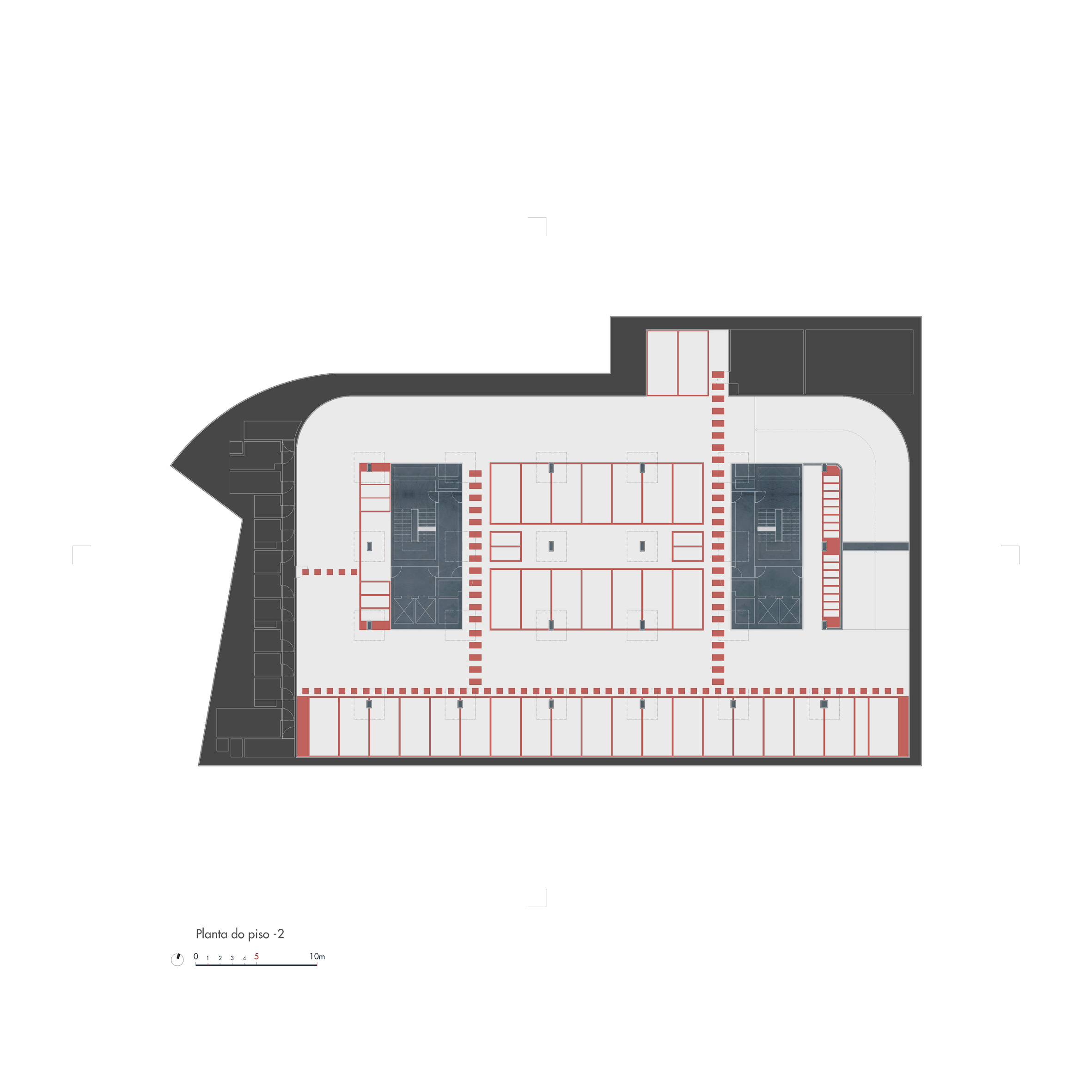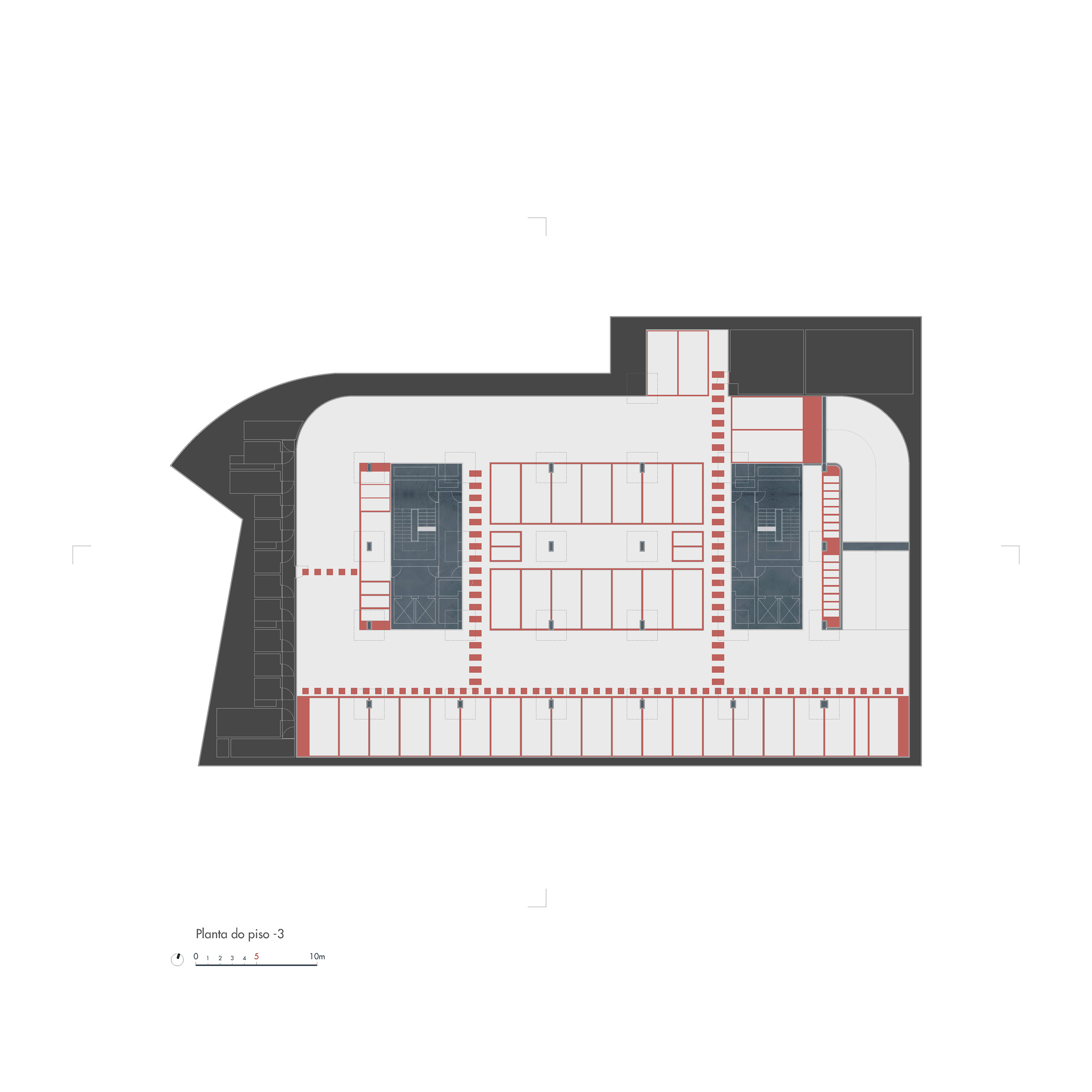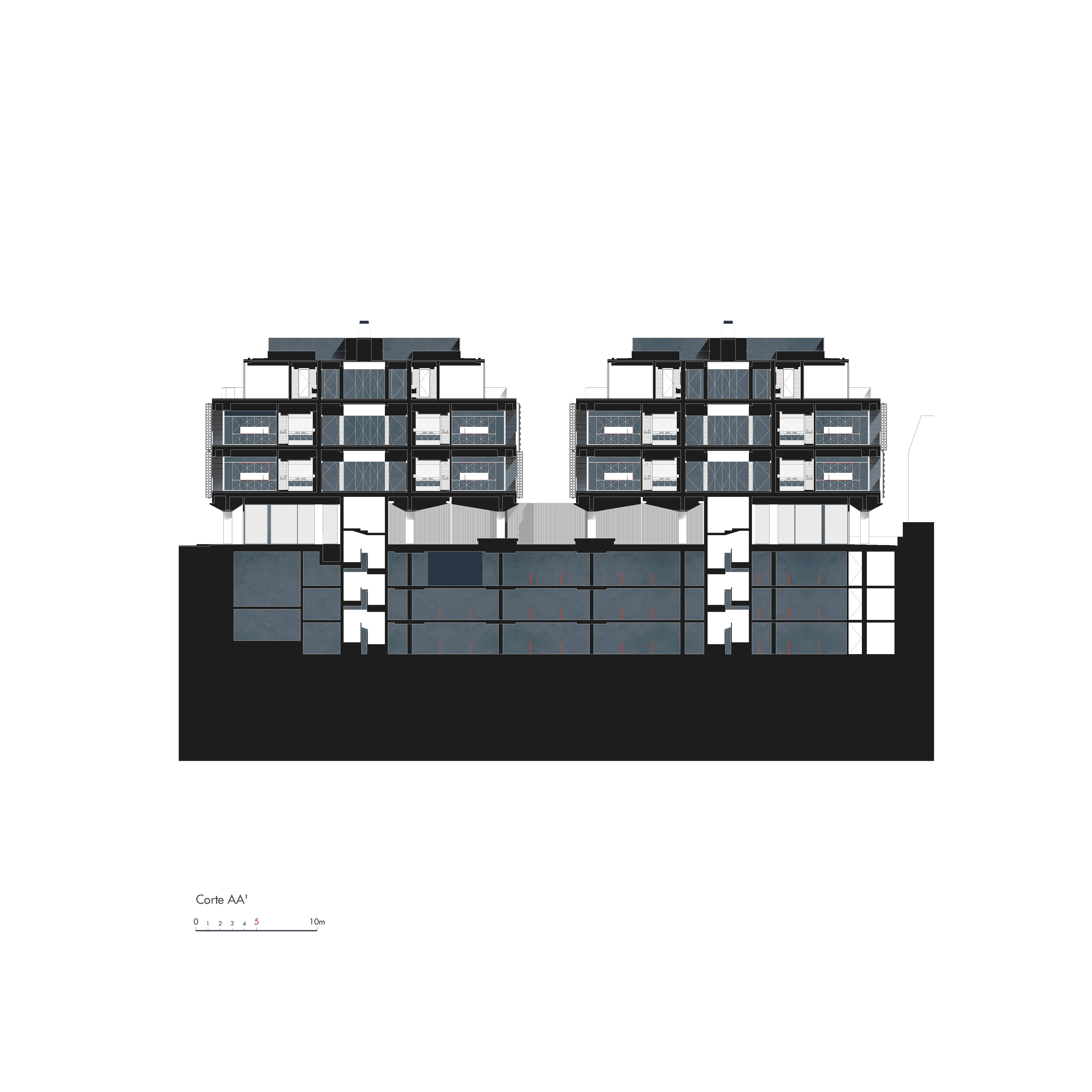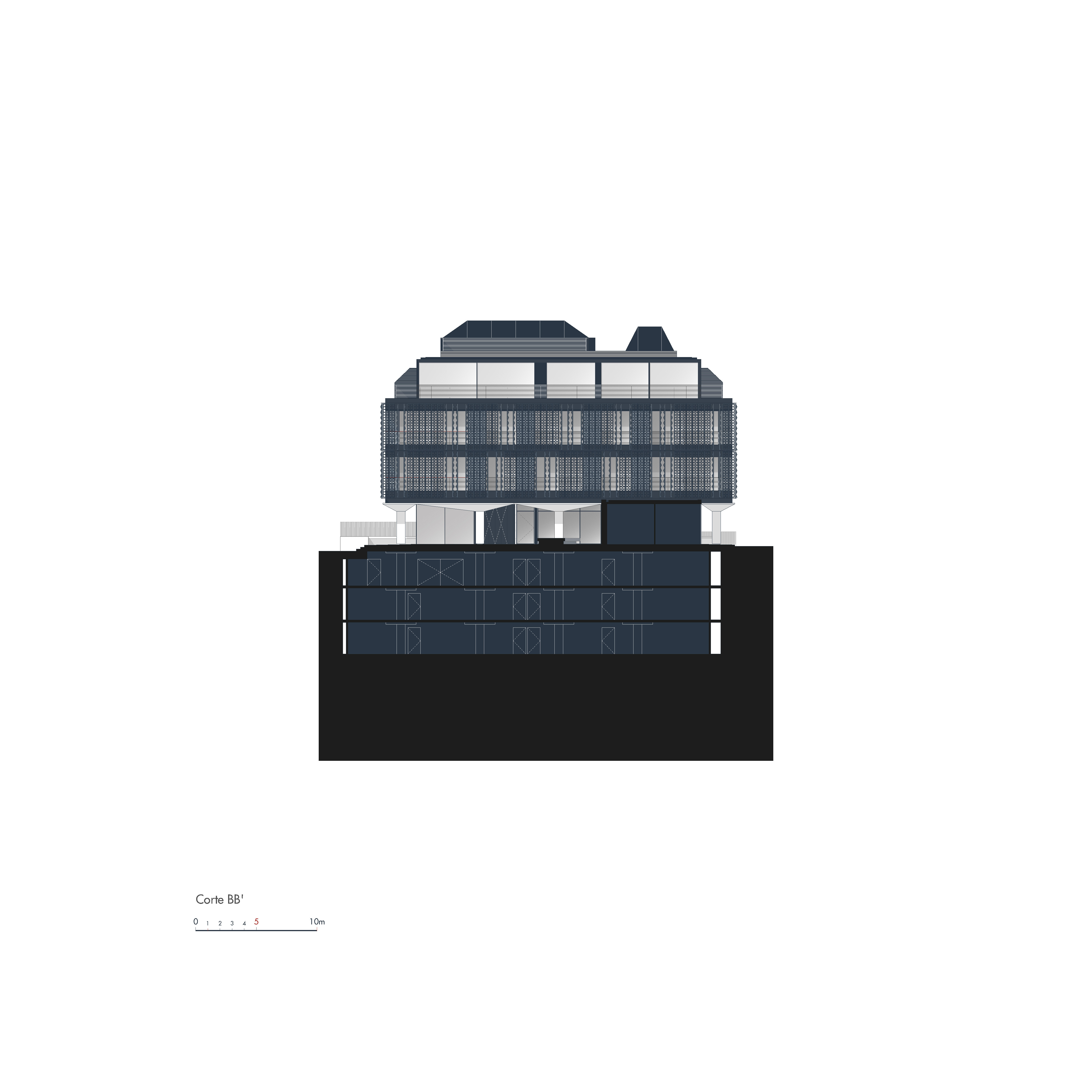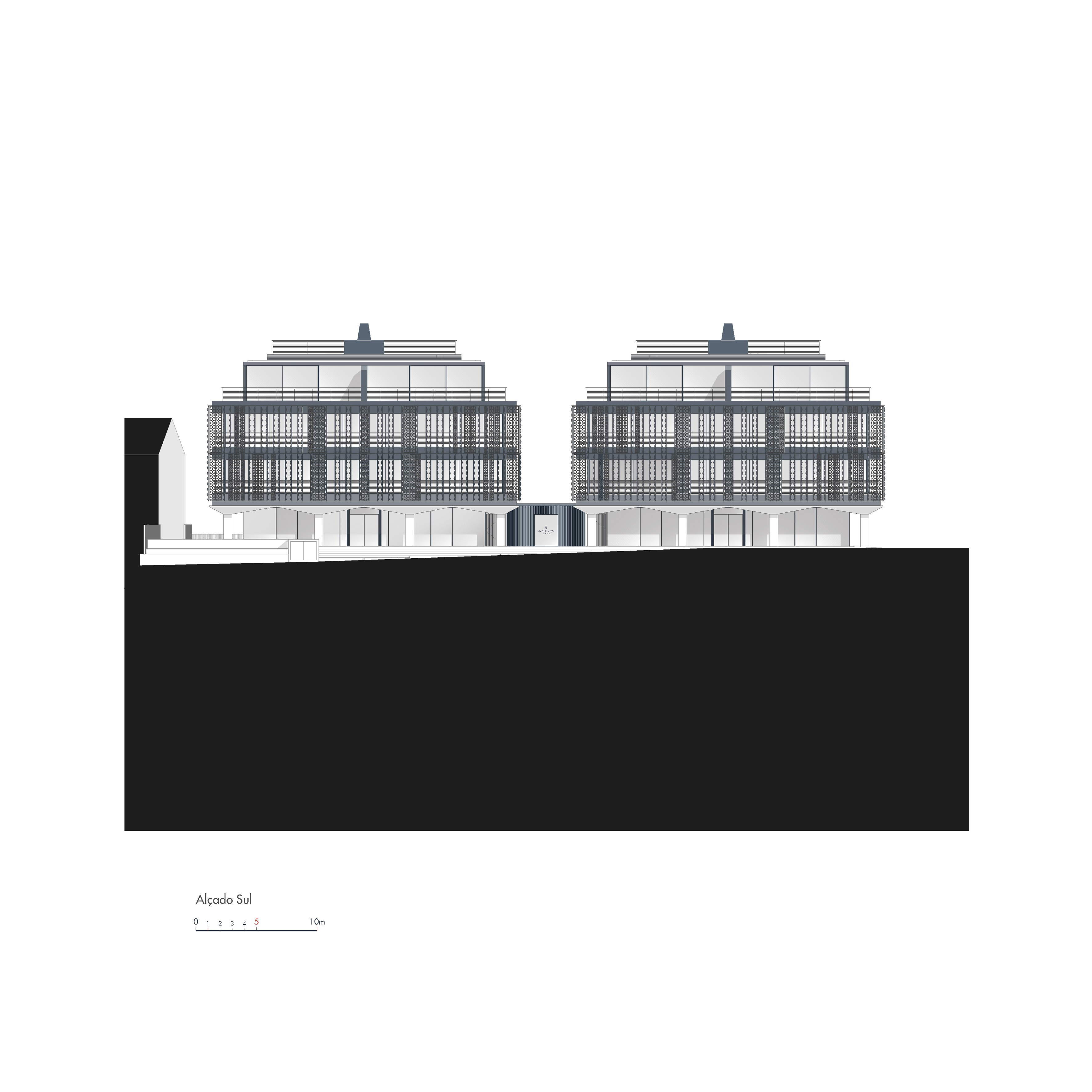Edifício Náutico responds to the challenge introduced by Cascais City Hall to requalify the old structure at the entrance of the village, known as the former Hotel Nau.
Edifício Náutico is a mark at the entrance of Cascais, a commitment with the village, transforming the heritage of this block and surroundings that privileges the quality of the public space. It is necessary to notice this space as an addition to urban living and not as a waste that was marginalized over the years.
Edifício Náutico, in its implementation, frees itself from the boundaries of the lot and adjoining buildings. The distances to the limit of the lot draw a dominant position with the rest of the block and allows an opening of the ground floor and the possibility of thinking the building as a city: designs a square, improves accessibility, and consents a dynamic to those who pass.
The building and its language dictate the new identity of the block, respecting the adjoining buildings, using glass, wood, ceramics, and metal.
The ground floor is a square with porches that results from a reinterpretation of the arcades that mark the city of Cascais. The movement expressed in the lines of these porticos, like the waves of the sea, gains a different life depending on the time and lighting throughout the day, letting this square to have multiple facets. The materiality is the glass that expresses the experience on the ground floor, allowing the extension of the view. The implantation allows the visitor to dilute himself in the public space, to be in a building but not “closed in it”. This sensation that we look for on the ground floor promotes the surroundings as a reference: being “inside” and seeing the Railway Station or the Station Square, knowing that the sea is south, the Citadel to the southwest.
Edifício Náutico designs an interior courtyard between the stores, which allows access to the housing units. In this courtyard we designed some flower beds between the entrances to the apartments and create an introspective effect. In fact, as the lot has no longer any permeable area, we propose the creation of this material that privileges the quality of living - whether in commerce, services, housing or as a passerby. These gardens have native plants.
The apartments’ distribution in the towers follows a modular and rational exercise that considers the program requested by the client and the measures of the towers in the lot. The strategy was to design a central nucleus with common areas. Around that nucleus we create a ring of infrastructures where bathrooms and kitchens fit. This option allows to free the facade of the towers and its corners for spaces such as the living room and bedrooms.
The blinds in ceramic modules allow the shading of the interior of the apartments and the rhythm of the facade guaranteeing a changing appearance to the building. Depending on the use that the inhabitants give it (open, closed, or semi-open), the panels create soft optical effects of transparency and opacity that also change according to the observation point and the light throughout the day.
The skin of the Building is a reinterpretation of another important part of Portuguese heritage, drawing ceramic blinds that define privacy and provide light/heat protection. The whole skin has 29.104 ceramic pieces, distributed in 856 panel blinds (fixed and pivot) with 4 meter high each.
The blue color was chosen for its historical importance to Portuguese ceramics. At the end of the 17th century, due to the influence of Dutch tiles and imported Chinese porcelain, blue[1] was introduced in Portuguese ceramics. This color allowed the creation of dynamic paintings, with shapes in motion and showed the value of the line. Furthermore, it was from this moment that Portuguese production increased exponentially, and great masters of national tiles appeared, such as António de Oliveira Bernardes and Manuel dos Santos. Later, in the 19th century and with the departure of the Portuguese royal family to Brazil, there was a development of ceramics in this country and an enormous trend towards the use of tiles in the total covering of the buildings' facades. This material allowed the interiors to be cooler and was resistant to heavy tropical rains. The migrants, back in Portugal, brought their admiration for buildings completely covered with tiles, adapting industrial resources to their production. The use of ceramics in buildings is thus remarkable for Portuguese architecture, especially in the romantic[2] period.
Likewise, Edifício Náutico is a precursor of public space, located near the sea, so it must live up to its location. Its personality is closely linked to its location by the sea, transforming the nautical language into an architectural language, which is reflected in the shapes, materials, and colors.
Guided by the tradition and maritime aptitude of Cascais, Edifício Náutico simultaneously seeks to be a landmark of its own time, having a simple and contemporary design. The blue color is important because it is directly related to the sea and values the building's cultural connection to Cascais, land of kings and fishermen. As such we propose this color, to highlight the blue of the sea and the nobility of the space where it is inserted, and to value the surrounding historical-cultural legacy.
[1]http://www.museudoazulejo.gov.pt/Data/Documents/Cronologia%20do%20Azulejo%20em%20Portugal.pdf
[2]https://www.comunidadeculturaearte.com/a-historia-do-azulejo-portugues/
